Hubble snapped this image of the young comet-like object P/2019 LD2 as it orbits near Jupiter’s captured ancient asteroids, which are called Trojans. The icy object is the first comet astronomers have spotted near the Trojan population.
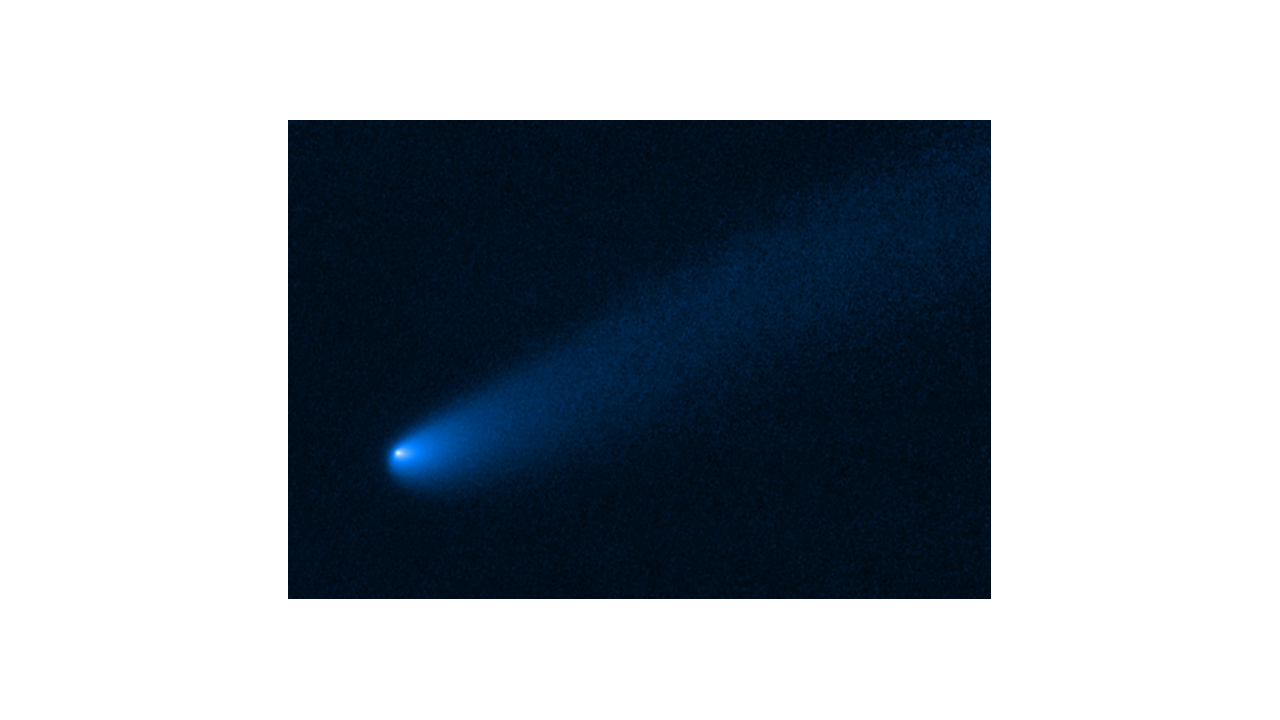
news, journals and articles from all over the world.

Hubble snapped this image of the young comet-like object P/2019 LD2 as it orbits near Jupiter’s captured ancient asteroids, which are called Trojans. The icy object is the first comet astronomers have spotted near the Trojan population.
New Brunswick, N.J. (Feb. 22, 2021) – Rutgers University–New Brunswick Professor Kristen McQuinn is available for interviews on the upcoming launch of the James Webb Space Telescope, its potential scientific impact and the leap forward it will provide in our understanding of the…
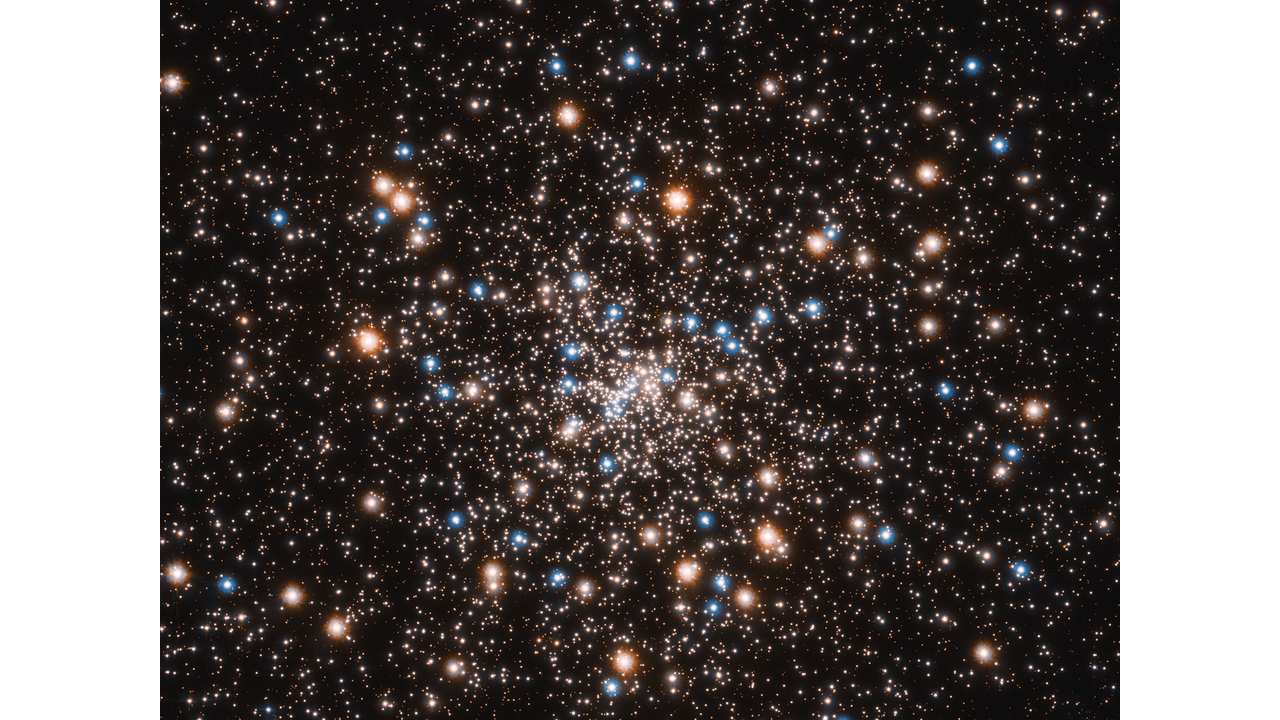
Astronomers using the Hubble Space Telescope in their hunt for a massive black hole at the heart of the globular cluster NGC 6397 found something they weren’t expecting: a concentration of smaller black holes lurking there instead. This is a new twist on the search for intermediate-mass black holes. They are the long-sought “missing link” between supermassive black holes and stellar-mass black holes.
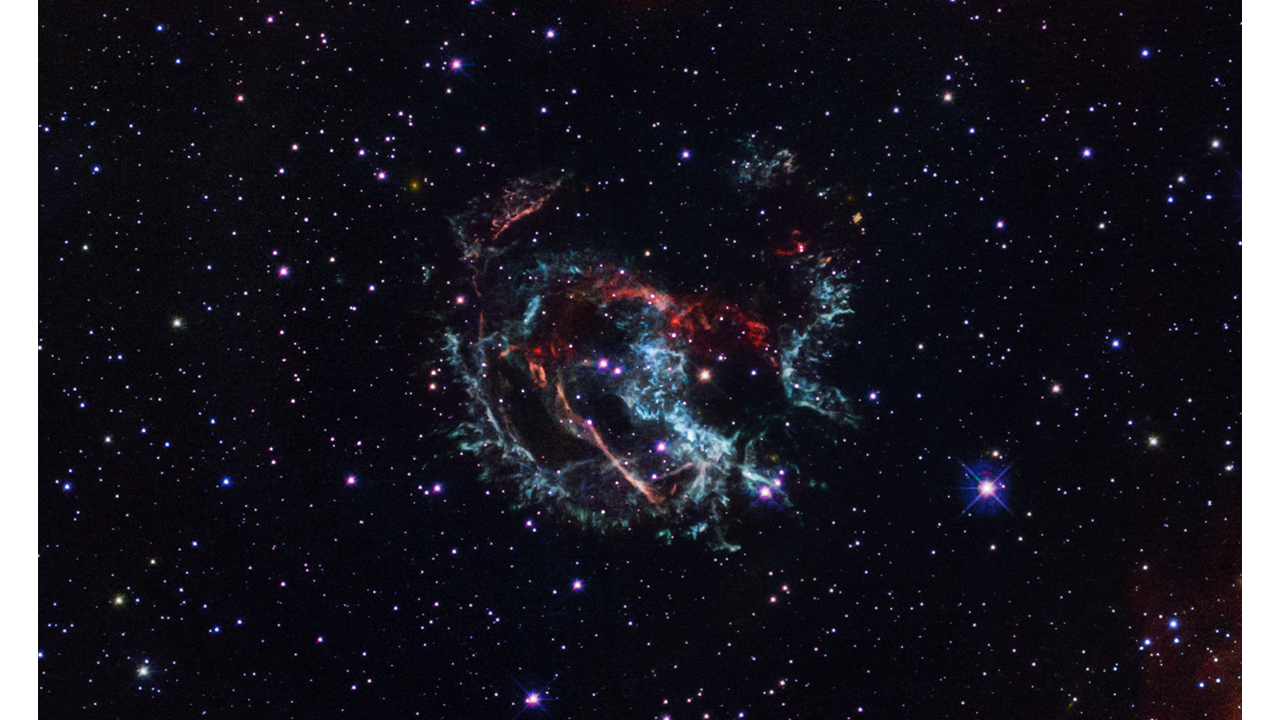
Hubble astronomers have retraced the expanding gaseous debris from a nearby exploded star to estimate the location and time of the stellar detonation. Their analysis reveals that the light from the supernova blast reached Earth about 1,700 years ago.
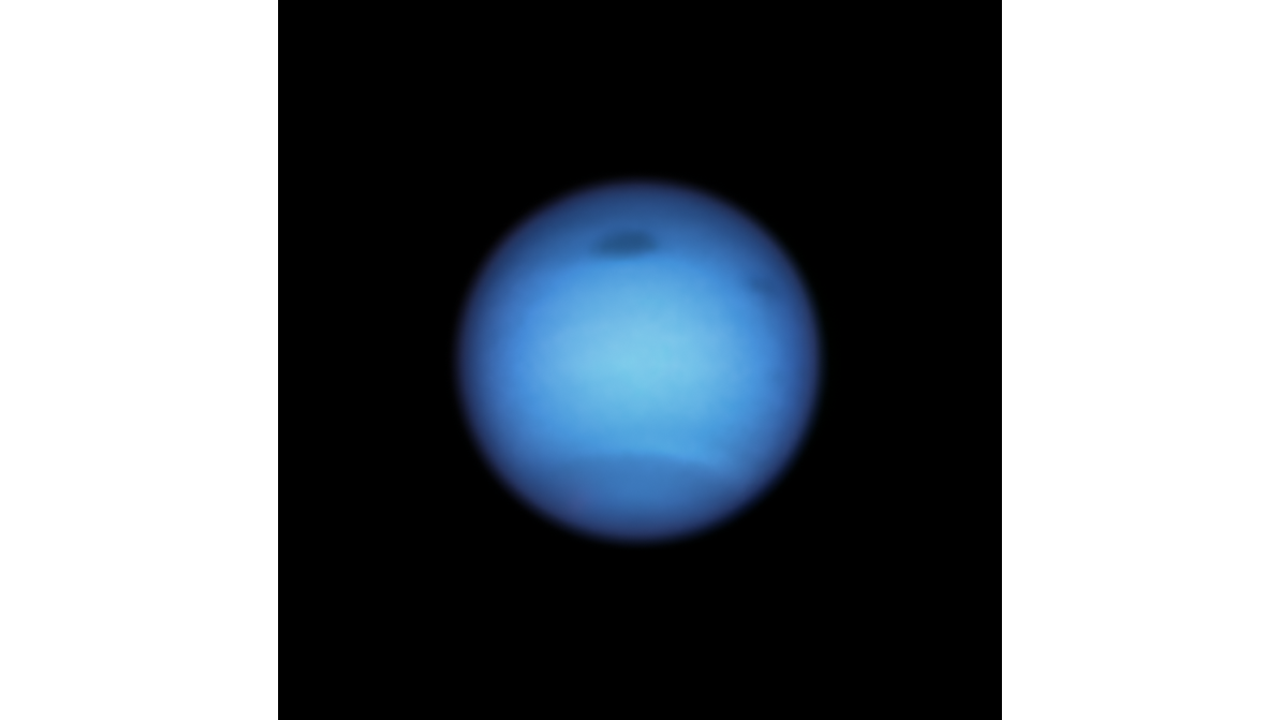
A giant dark storm on Neptune heading for certain doom at the equator mysteriously halted its journey and began drifting in the opposite direction. Almost simultaneously, another smaller dark spot appeared nearby, only to vanish months later. Hubble astronomers are presenting these findings today at the Fall 2020 American Geophysical Union meeting.
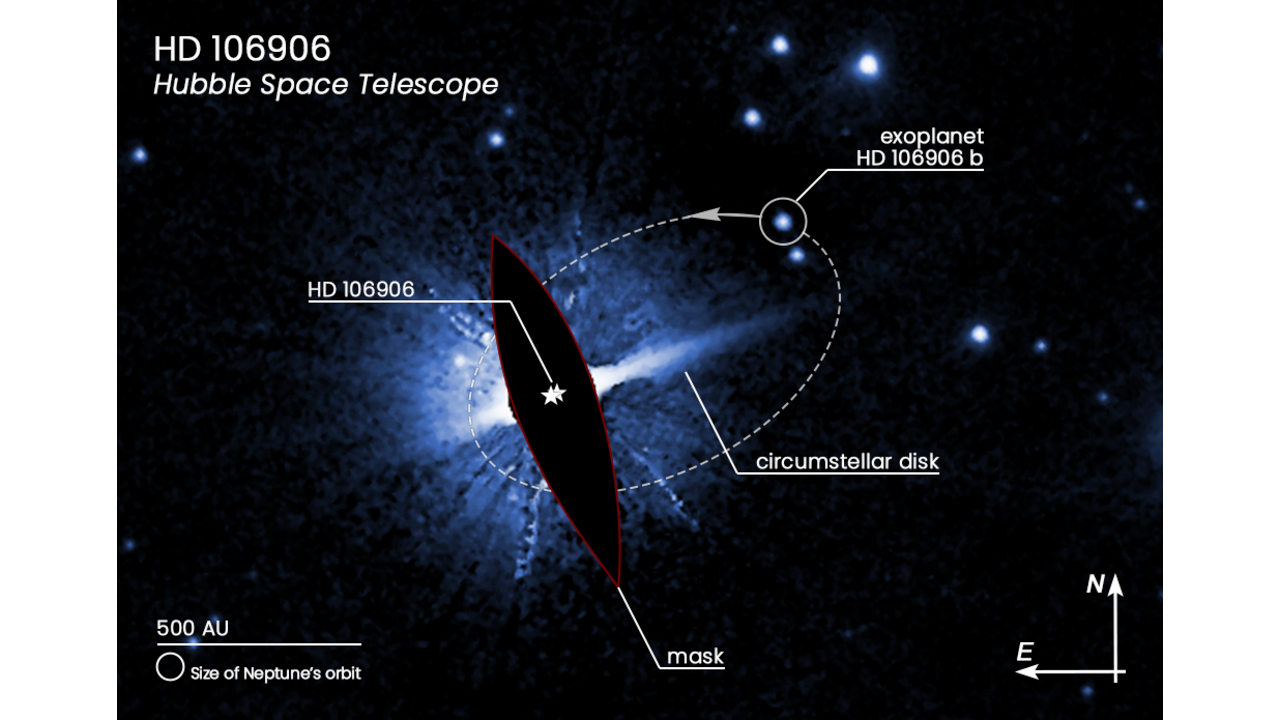
Astronomers analyzing Hubble images of the double star, HD 106906, have discovered a planet in a huge 15,000-year-long orbit that sweeps it as far from its stellar duo as Planet Nine would be from our Sun. This is observational evidence that similarly far-flung worlds may exist around other stars. Researchers hypothesize that the planet wound up there in a game of planetary pinball where the gravitational pull of a passing star modified the orbit’s shape.
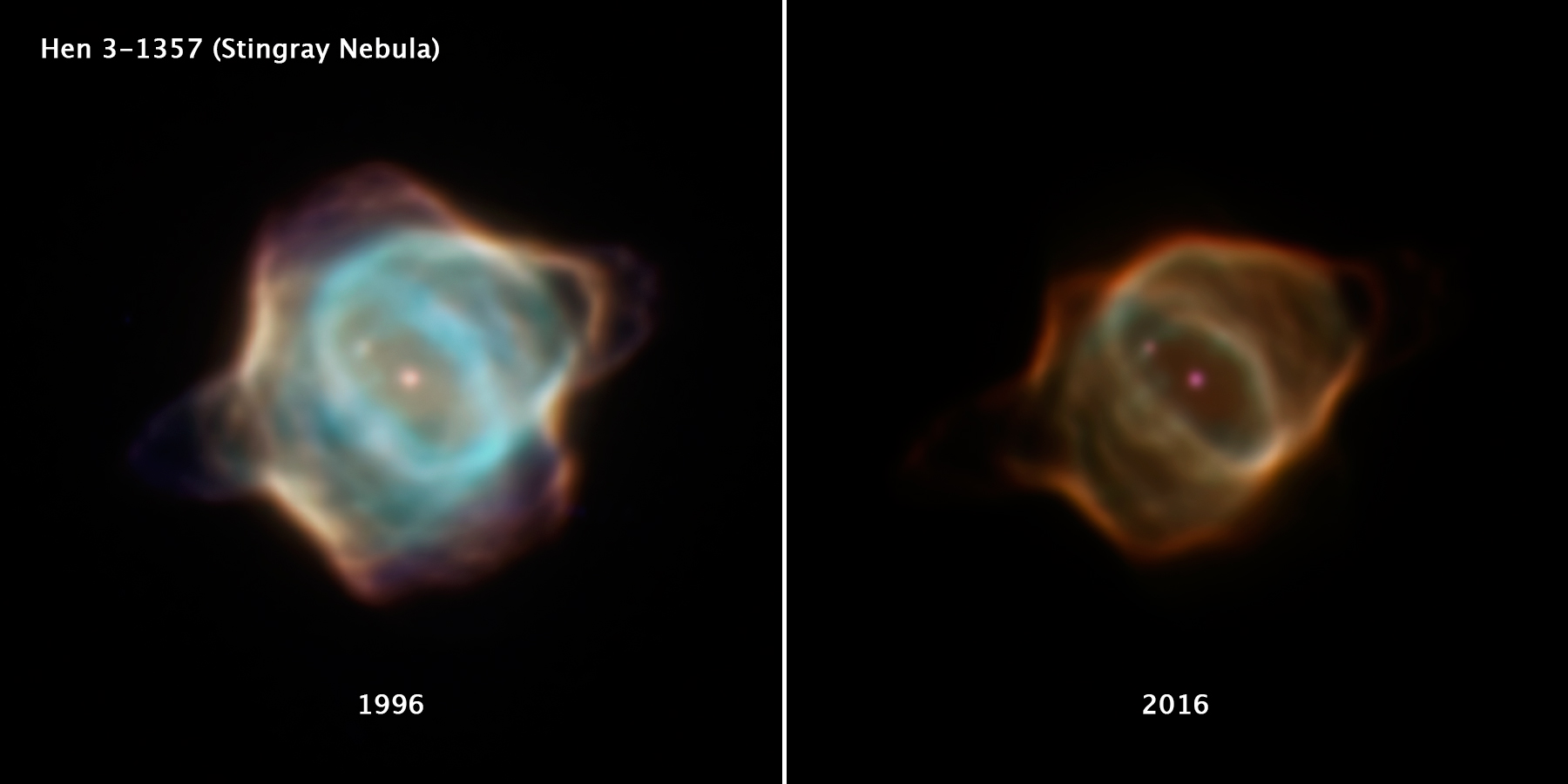
Using images from the Hubble Space Telescope, astronomers have discovered that the Stingray Nebula, the youngest planetary nebula in our sky, has faded dramatically over the course of just 20 years. If dimming continues at current rates, in 20 or 30 years the Stingray Nebula will be barely perceptible.
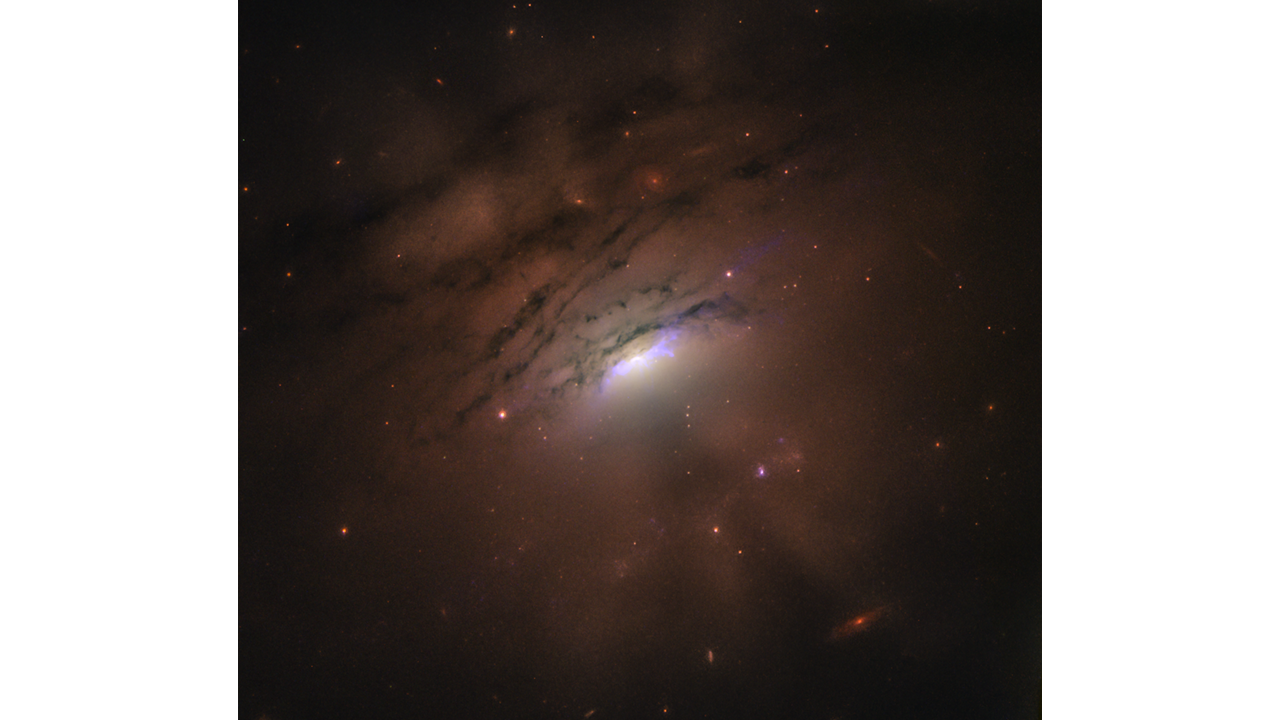
This Hubble image of a disk of material feeding a monster black hole in nearby galaxy IC 5063 may be casting its shadow into space. The shadow is interspersed with bright rays that extend across the galaxy. This unique effect offers insight into the structure of the disk.
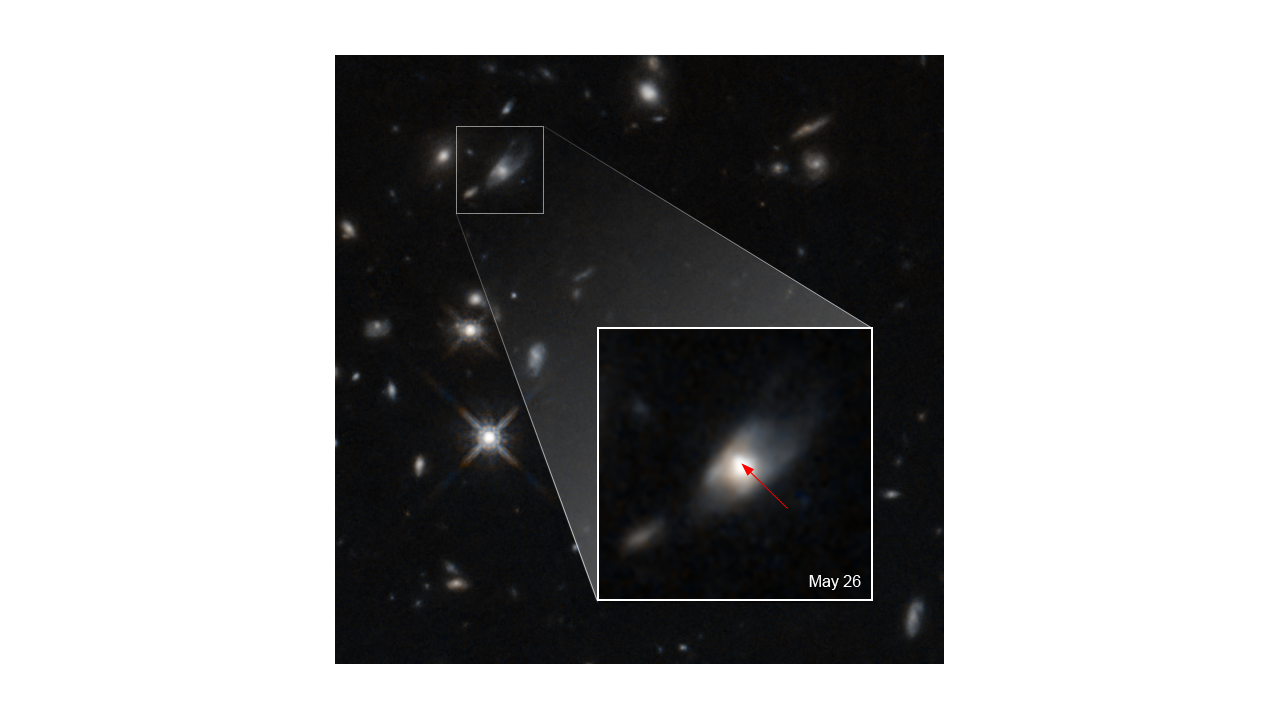
Following up on an enormous gamma ray burst detected by Swift in May, Hubble astronomers believe they’ve viewed the glow of a kilonova, the aftermath of a colossal explosion caused by the merger of two neutron stars that formed a magnetar. The near-infrared emission seen by Hubble was 10 times brighter than predicted.
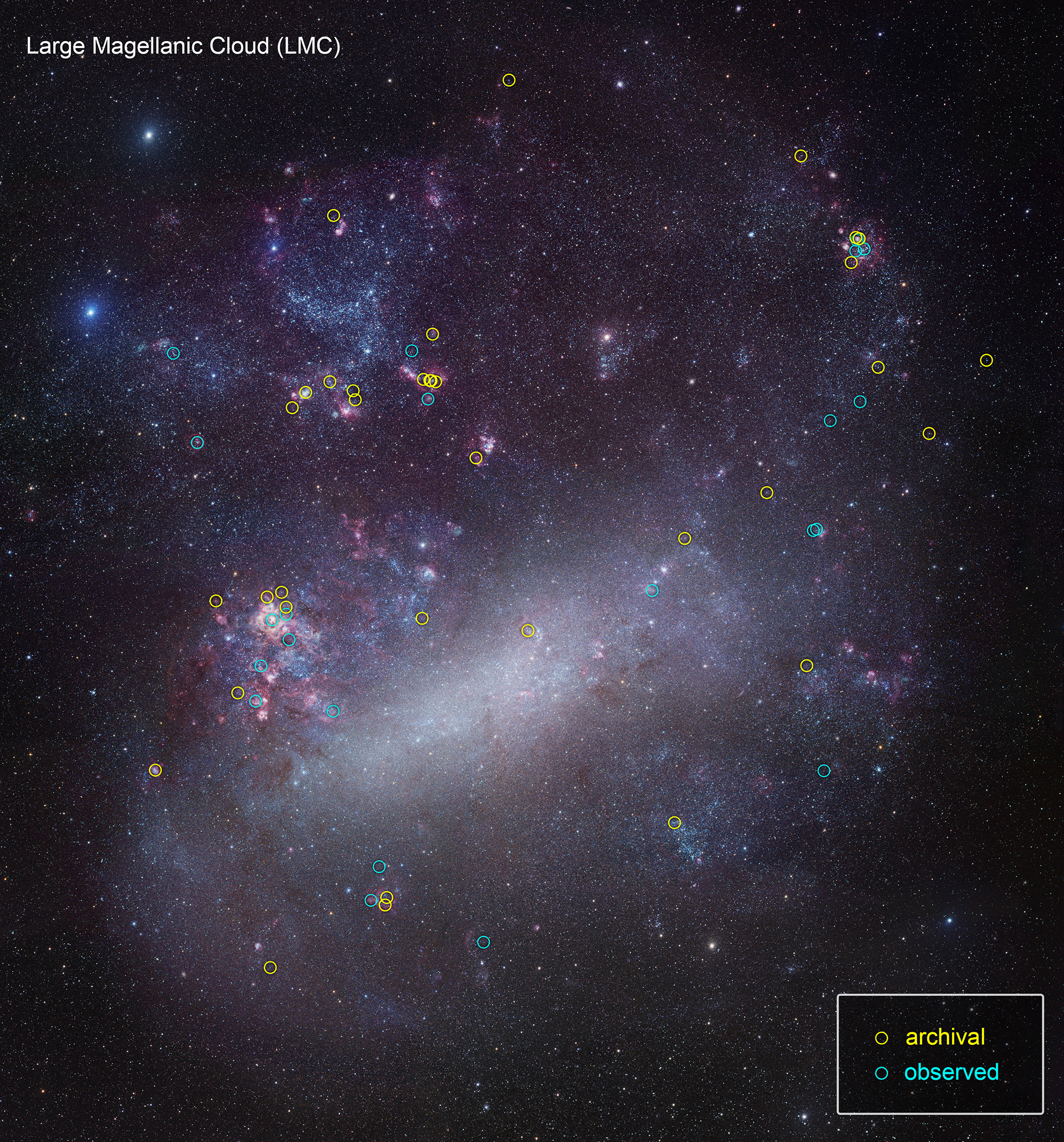
This is a ground-based telescopic photo of the Large Magellanic Cloud, a satellite galaxy of our Milky Way. The LMC is one of several select targets of a new initiative with NASA’s Hubble Space Telescope, called ULLYSES (UV Legacy Library of Young Stars as Essential Standards). The program is looking at over 300 stars to build an ultraviolet-light catalog for capturing the diversity of stars, from young to old, to give astronomers a much better understanding of the birth of stars and how this relates to everything from planets to the formation and evolution of galaxies.

This new Hubble photo resembling a Halloween carved pumpkin features the early stages of a collision between two galaxies. The “pumpkin’s” glowing “eyes” are the bright, star-filled cores of each galaxy that contain supermassive black holes. An arm of newly forming stars give the imaginary gourd a wry smirk.
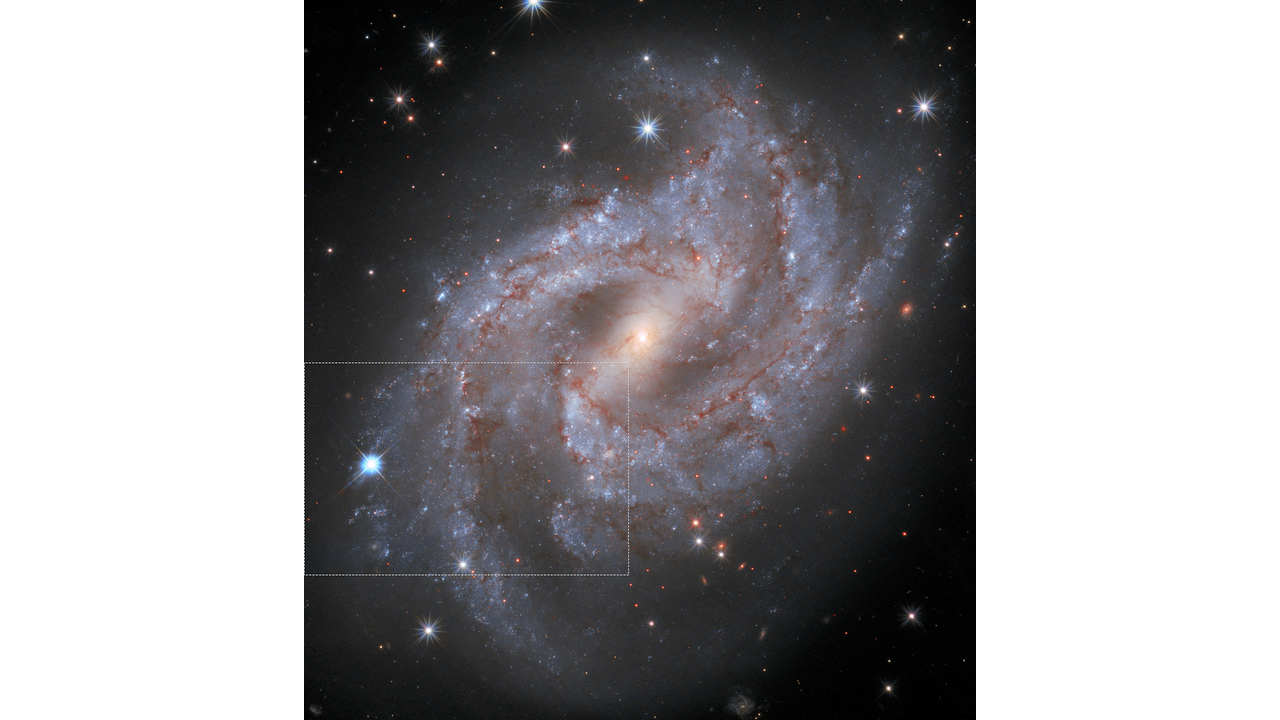
Hubble Space Telescope images have been assembled into a time-lapse video of an exploding star fading into oblivion inside a distant galaxy. The video compresses one-year’s worth of observations into seconds. When it exploded the supernova was as bright as 5 billion Suns.
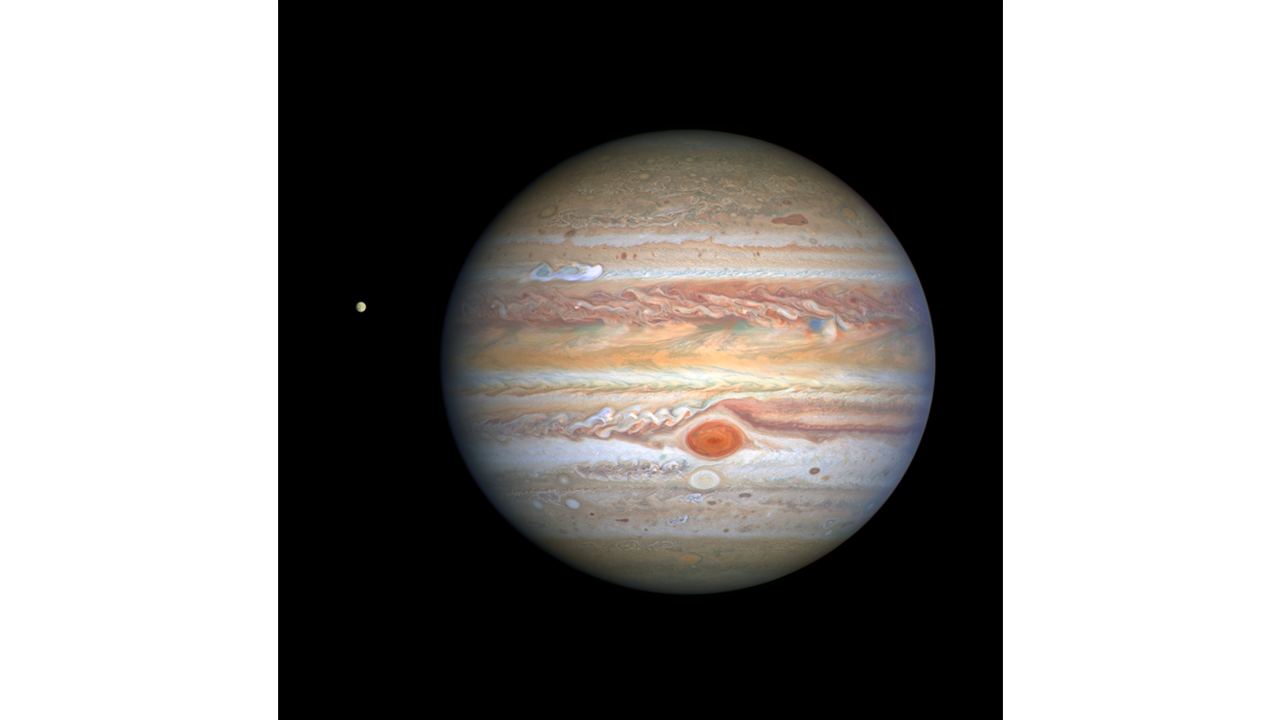
More massive than all the other planets combined, Jupiter truly is the king of our solar system. The swirling clouds, arranged in colorful, banded structures, change from year to year. The rich colors are produced by trace compounds in Jupiter’s predominantly hydrogen/helium atmosphere. Hurricane-force winds propel these clouds, and upwelling currents are ablaze with lightning bolts far more powerful than those seen on Earth.
The Hubble Space Telescope serves as a “weather satellite” for monitoring Jupiter’s stormy weather. The iconic Great Red Spot, a storm big enough to swallow Earth, shows that it’s shrinking a little in the Hubble images, but it still dominates the entire southern atmosphere, plowing through the clouds like a cargo ship.
Hubble astronomers patiently wait to get close-up snapshots as Earth make its nearest annual approach to Jupiter – an astronomical alignment called an opposition, when Jupiter is on the opposite side of the Earth from the Sun.
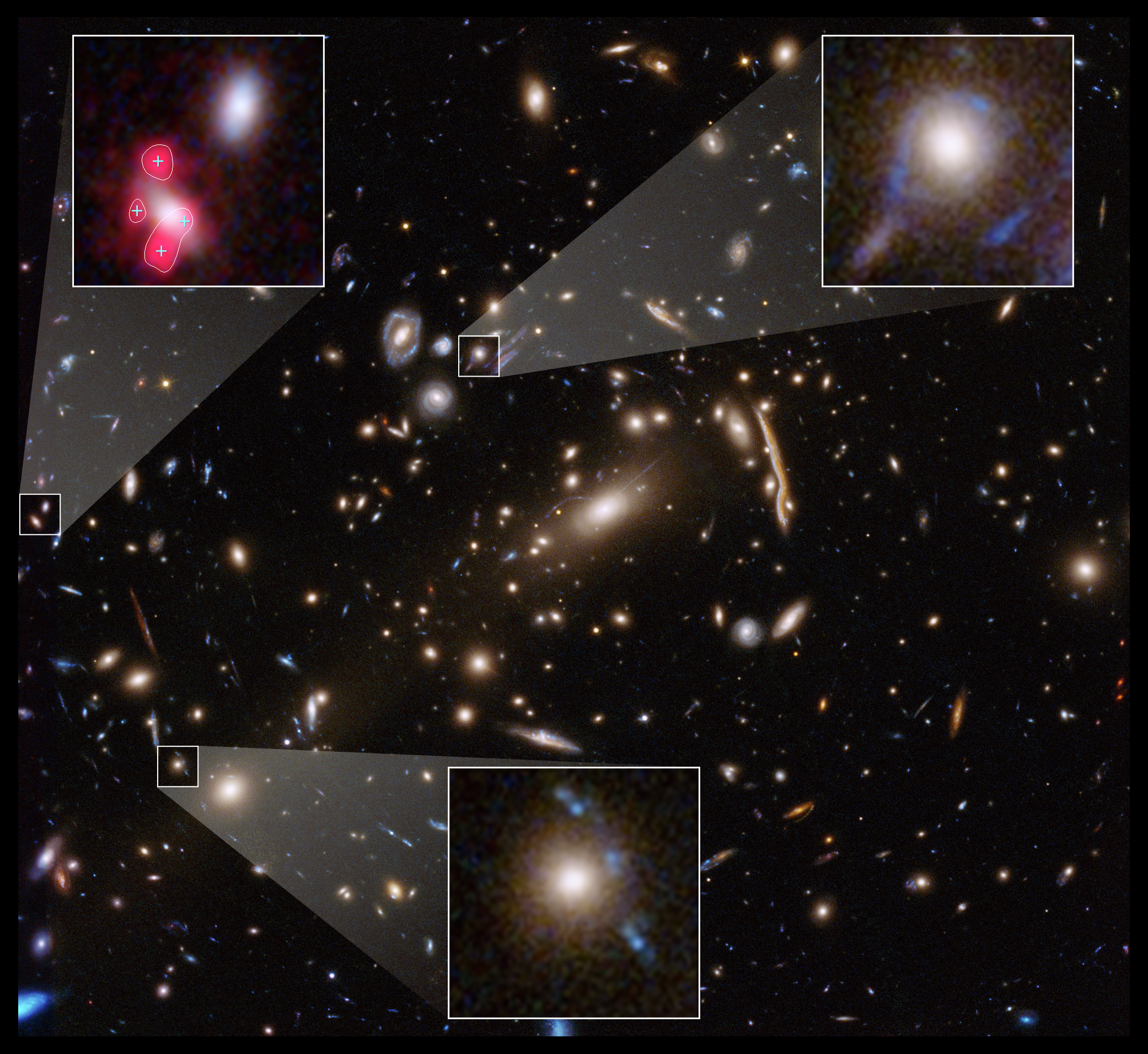
Astronomers using Hubble and the VLT have found that something may be missing from the theories of how dark matter behaves. This missing ingredient may explain why they have uncovered an unexpected discrepancy between observations of the dark matter concentrations in a sample of massive galaxy clusters and theoretical computer simulations of how dark matter should be distributed in clusters. The new findings indicate that small-scale concentrations of dark matter produce lensing effects that are 10 times stronger than expected.
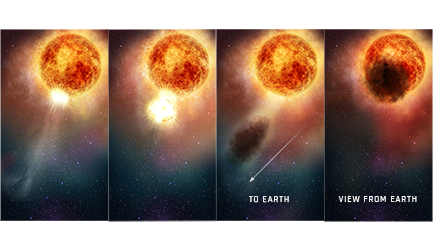
Hubble Space Telescope observations show that the unexpected dimming of supergiant star Betelgeuse was probably caused by an immense amount of hot plasma ejected into space. The plasma cooled, forming a dust cloud that blocked starlight coming from Betelgeuse’s surface.
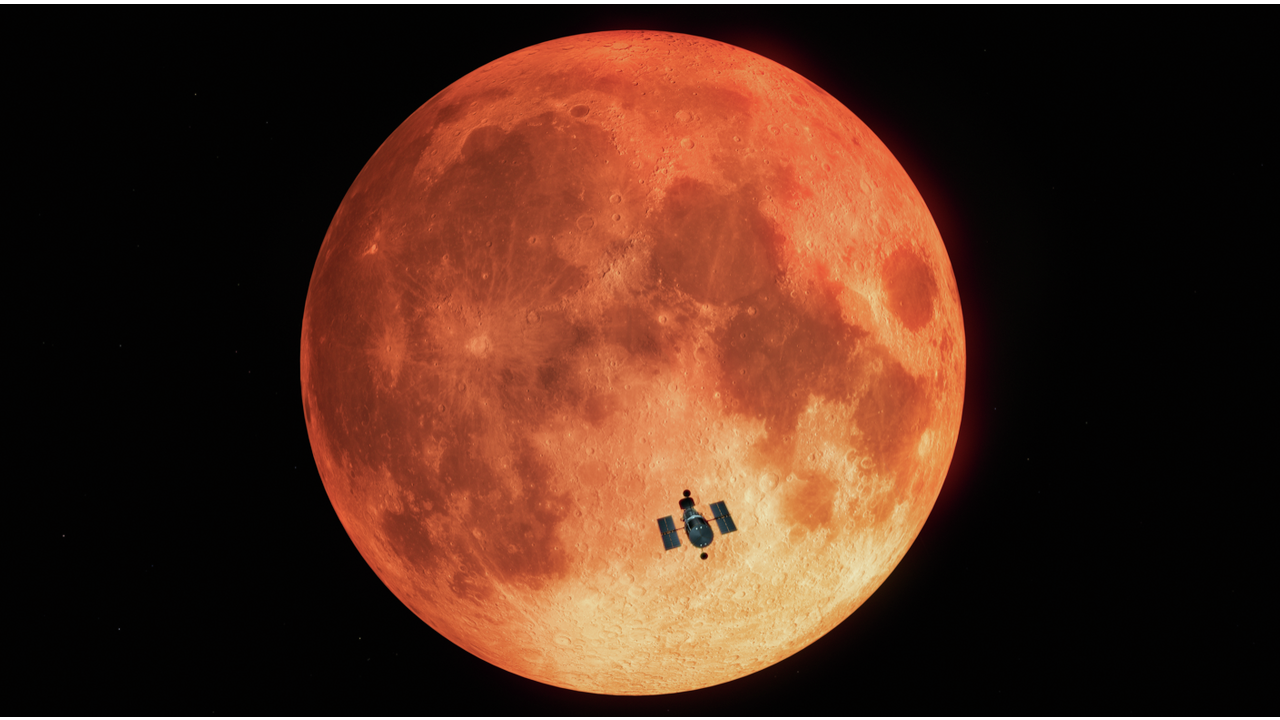
Astronomers used Hubble during a total lunar eclipse to detect ozone in our planet’s atmosphere by looking at Earthlight reflected off the Moon in ultraviolet wavelengths. This method serves as a proxy for how astronomers will observe Earth-like exoplanets in search of life.
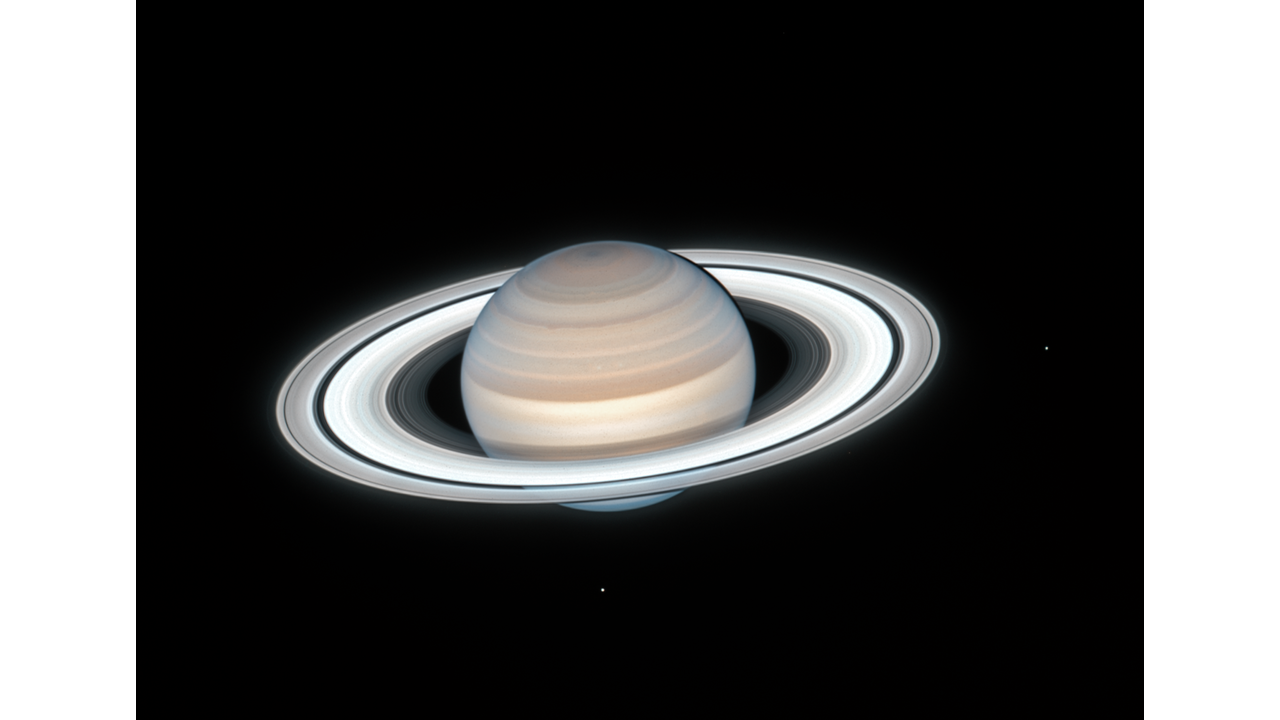
Hubble photographed Saturn and its rings on July 4, during summer in Saturn’s northern hemisphere. This image is taken as part of the Outer Planets Atmospheres Legacy (OPAL) project. OPAL is helping scientists understand the atmospheric dynamics and evolution of our solar system’s gas giant planets.
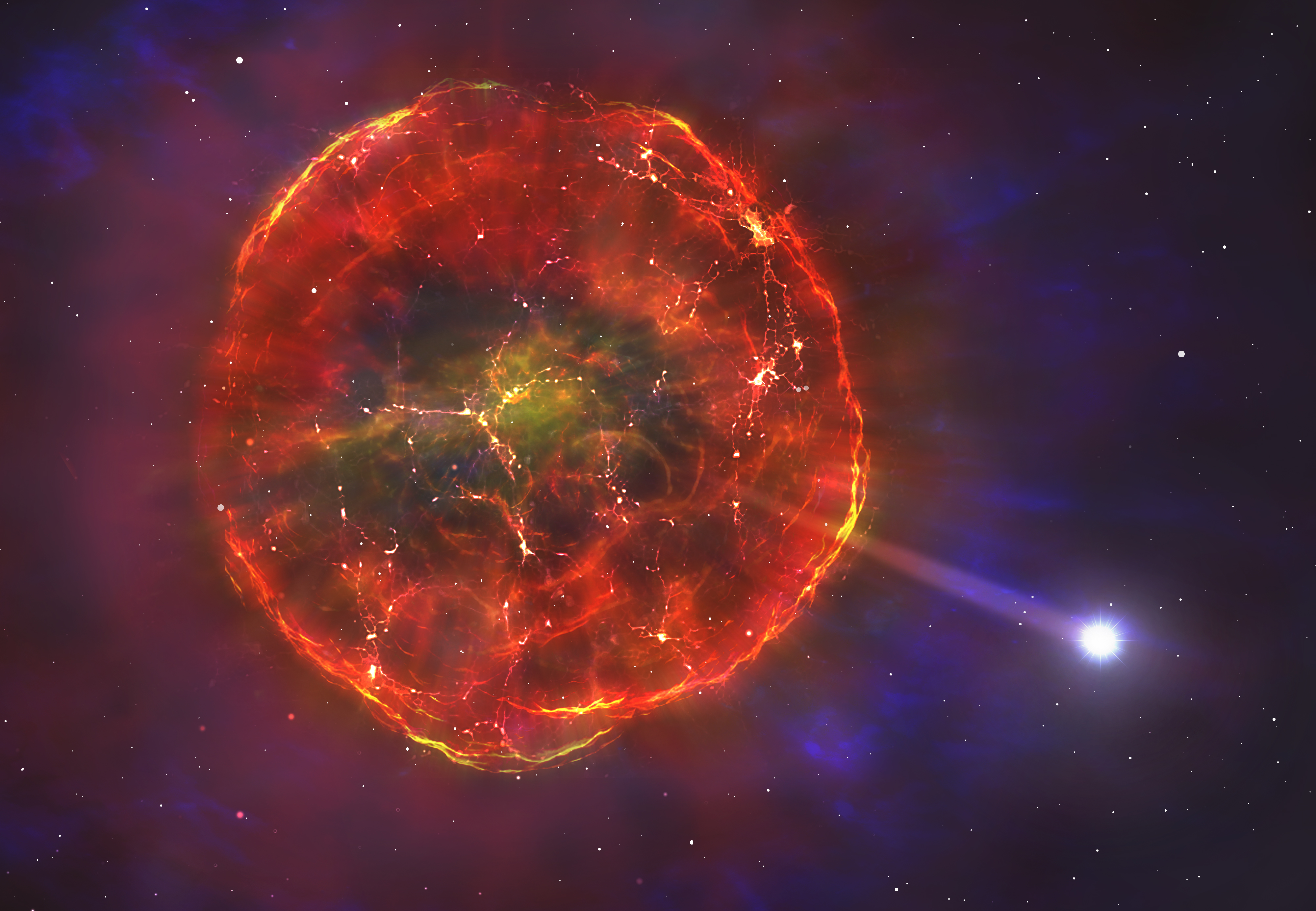
Bizarre white dwarf star shows evidence of a ‘partial supernova’ in observations using the Hubble Space Telescope, led by University of Warwick astronomers
Astronomers created a stunning new image showing celestial fireworks in star cluster G286.21+0.17.
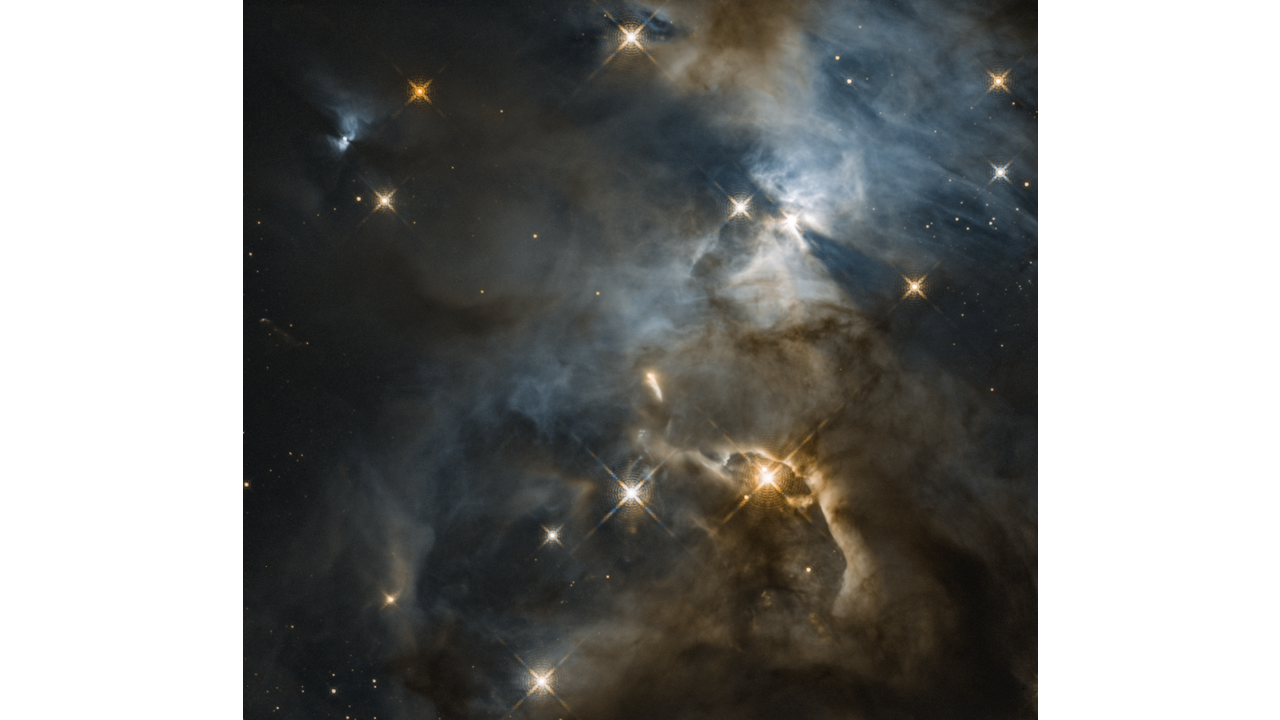
A disk around a young star is casting a huge shadow resembling a pair of wings on a distant cloud. In 2018, Hubble astronomers nicknamed the phenomenon the Bat Shadow. Now, they see those “wings” flapping!
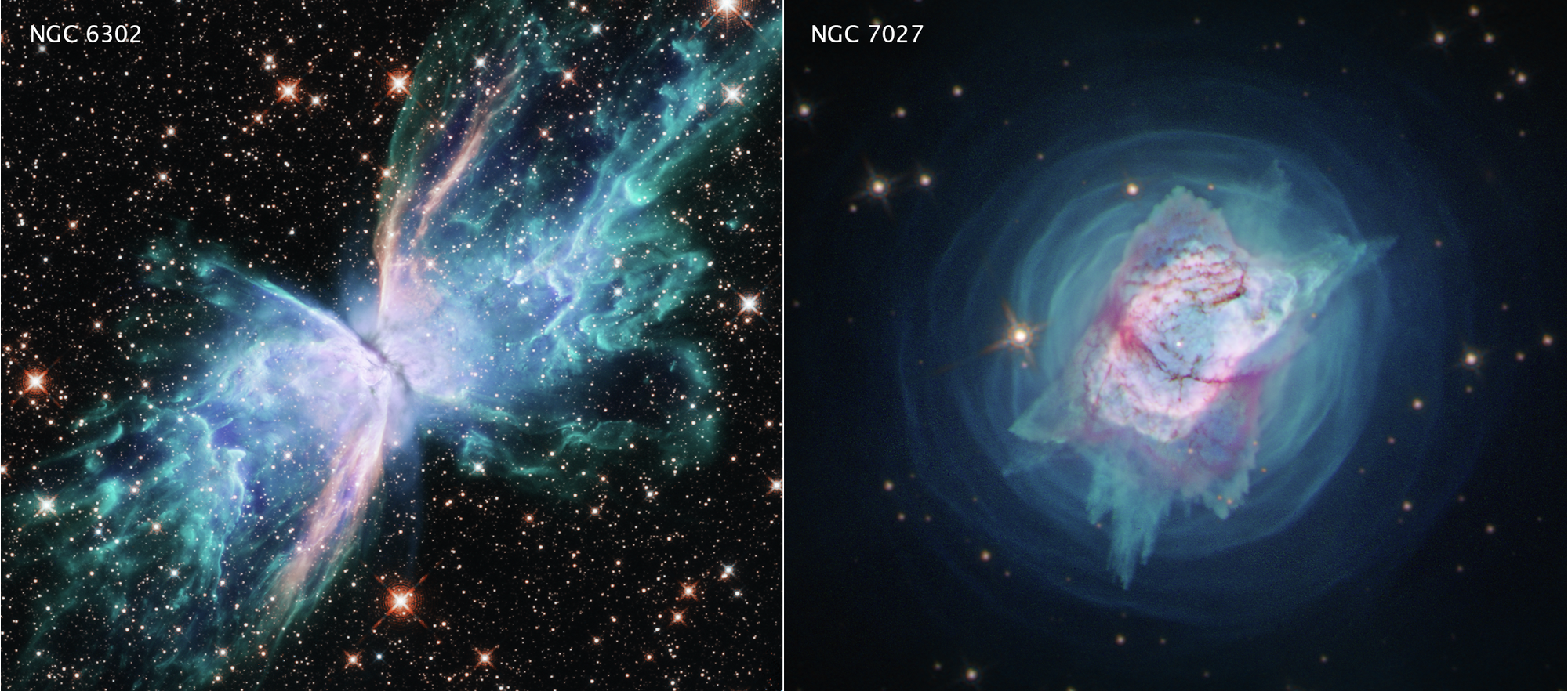
New images from the Hubble Space Telescope have helped researchers identify rapid changes in material blasting off stars at the centers of two planetary nebulas NGC 6302 and NGC 7027— causing them to reconsider what is happening at their cores.

Not long ago, the center of our galaxy exploded. Our primitive ancestors, already afoot in Africa, probably saw the resulting flare. Now Hubble detects that flash’s signature in a huge tail of gas orbiting the galaxy some 200,000 light-years away.
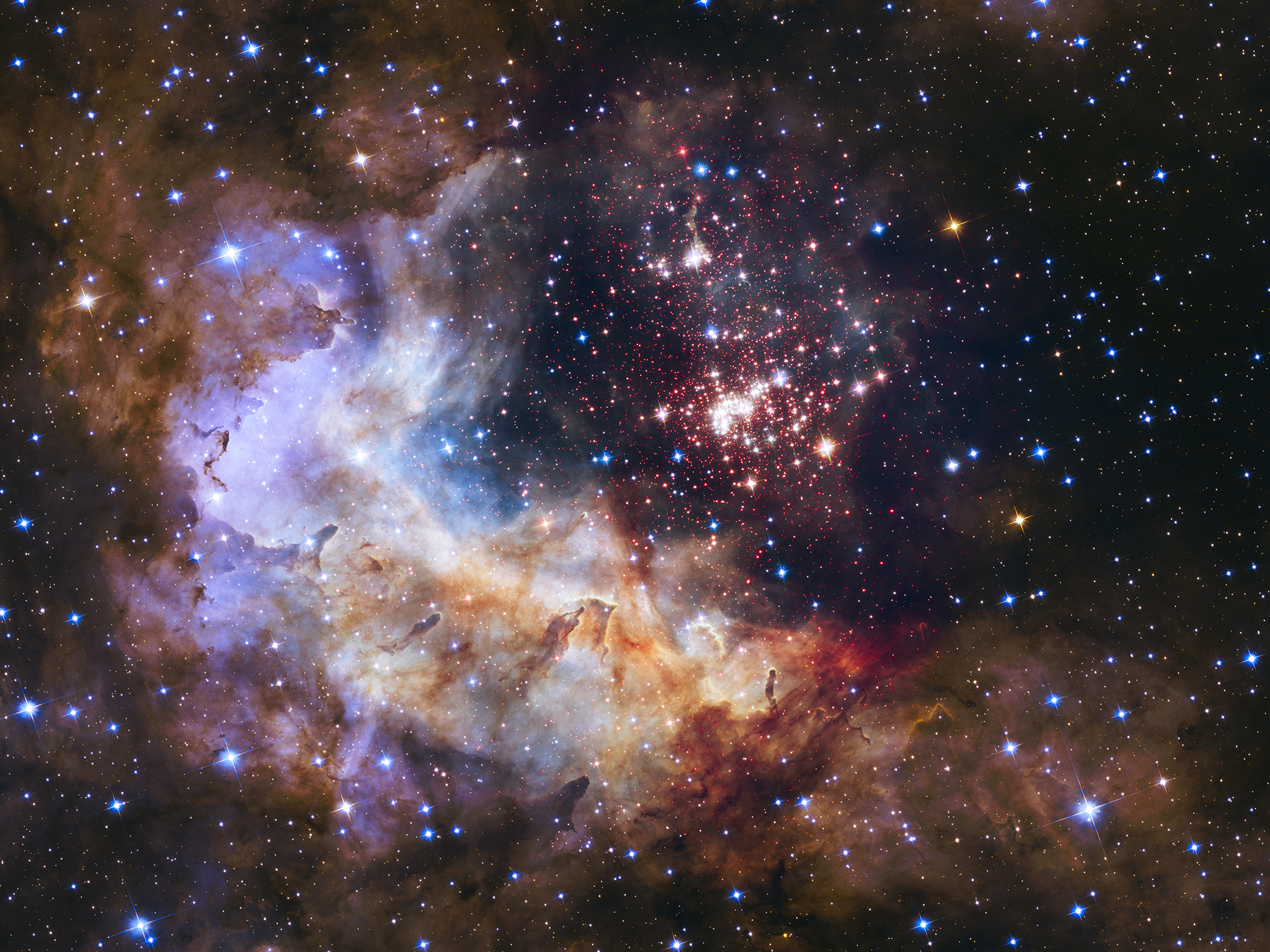
When it comes to the best region to form planets, it’s all about location. Planets in the nearby star cluster Westerlund 2 may have a rough time forming in the crowded core. Astronomers using Hubble find that energy from hefty stars is blowing away planet-forming dust clouds from smaller stars.
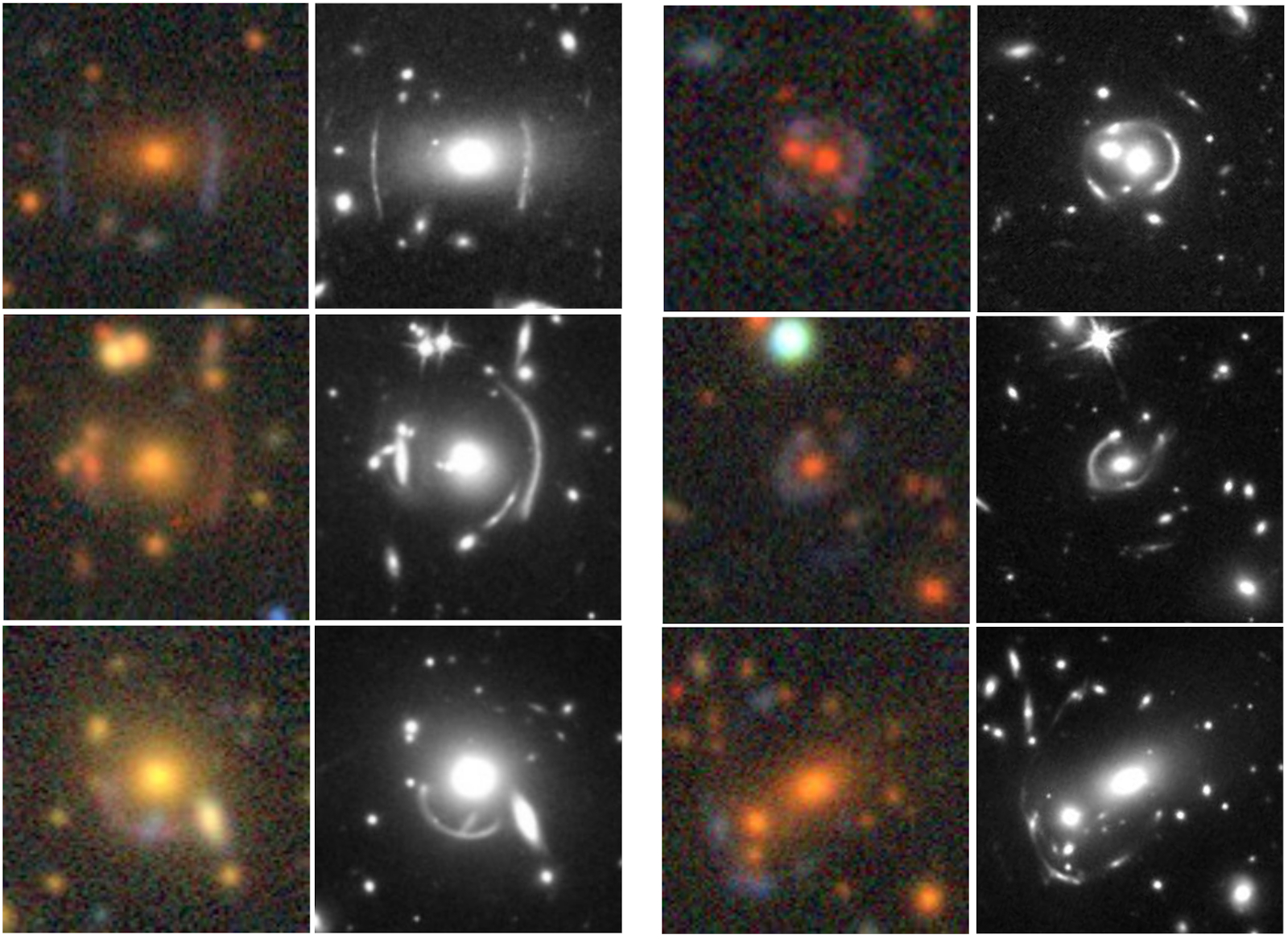
Like crystal balls for the universe’s deeper mysteries, galaxies and other massive space objects can serve as lenses to more distant objects and phenomena along the same path, bending light in revelatory ways. Gravitational lensing was first theorized by Albert…
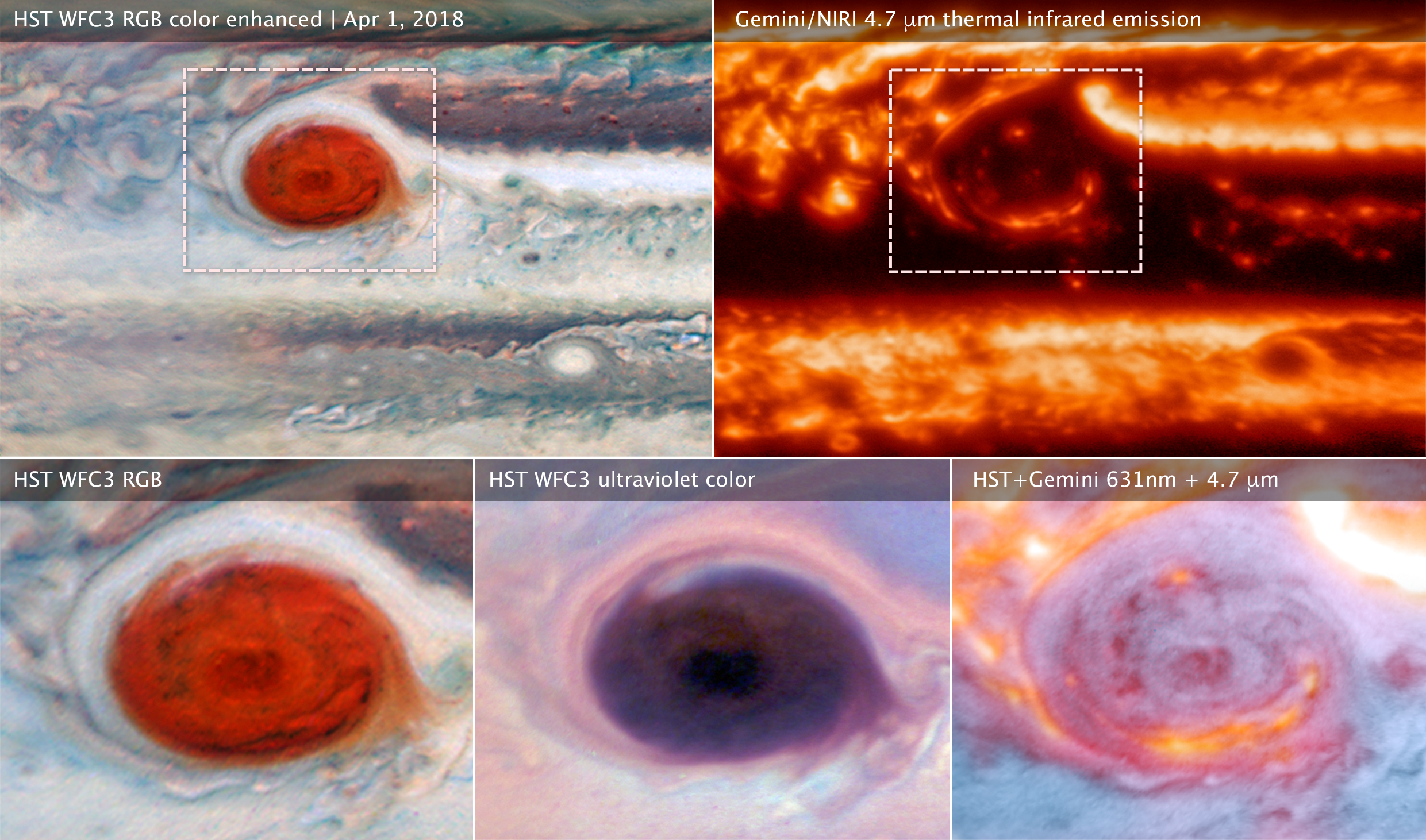
Thanks to the teamwork of the Hubble Space Telescope, the Gemini Observatory, and the Juno spacecraft, scientists are able to probe deep into Jupiter’s storm systems and investigate sources of lightning outbursts, map cyclonic vortices, and unravel the nature of enigmatic features within the Great Red Spot.
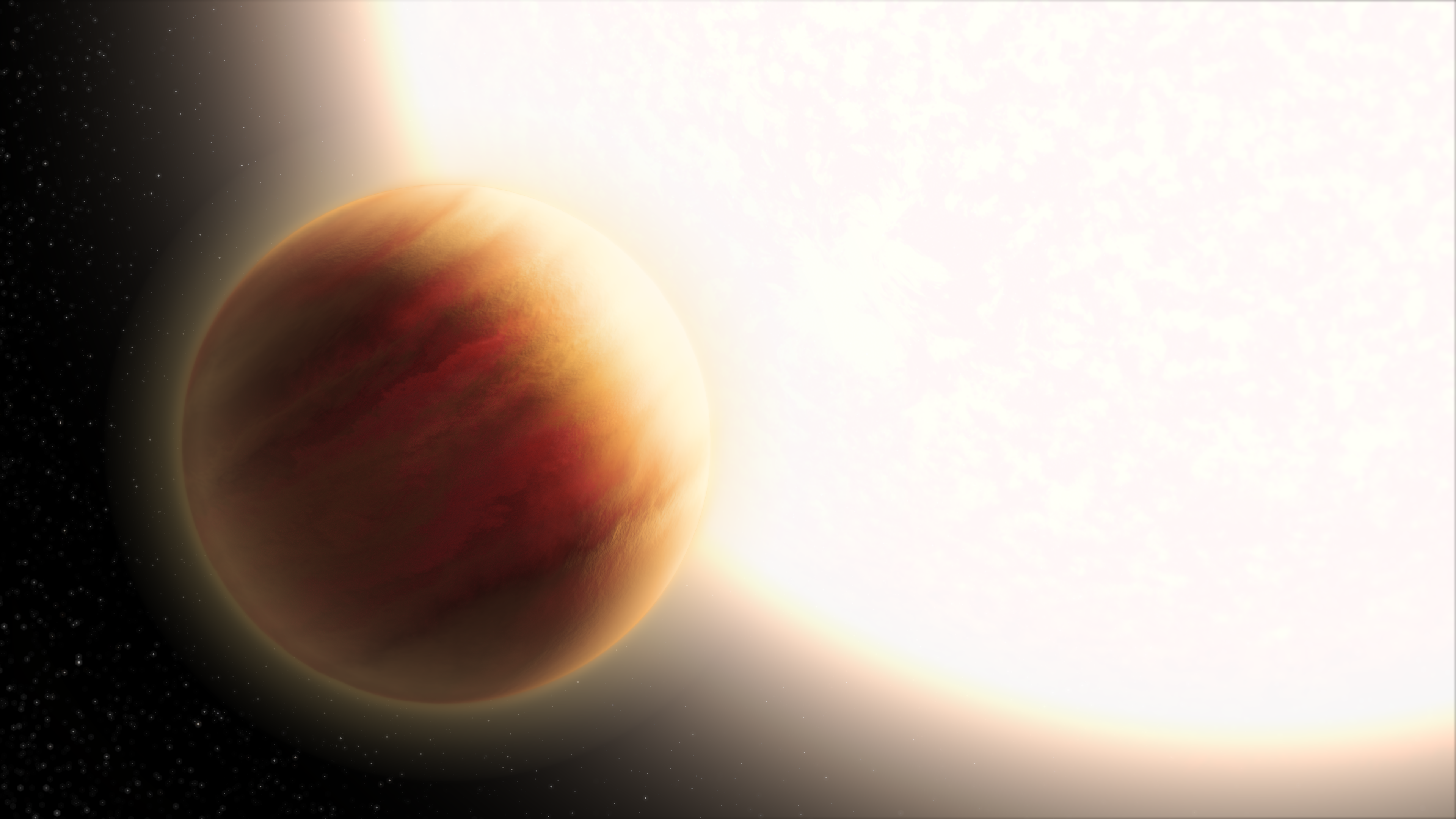
Combined observations of WASP-79b from Hubble and other telescopes reveal a weird super-hot planet where the sky is yellow instead of blue due to lack of an atmospheric effect called Rayleigh scattering, which makes Earth’s sky blue.

This pair of Hubble photos of comet C/2019 Y4 (ATLAS), taken on April 20 and 23, 2020, provide the sharpest views yet of the breakup of the solid nucleus of the comet. Hubble distinguishes as many as 30 pieces that are roughly the size of a house.
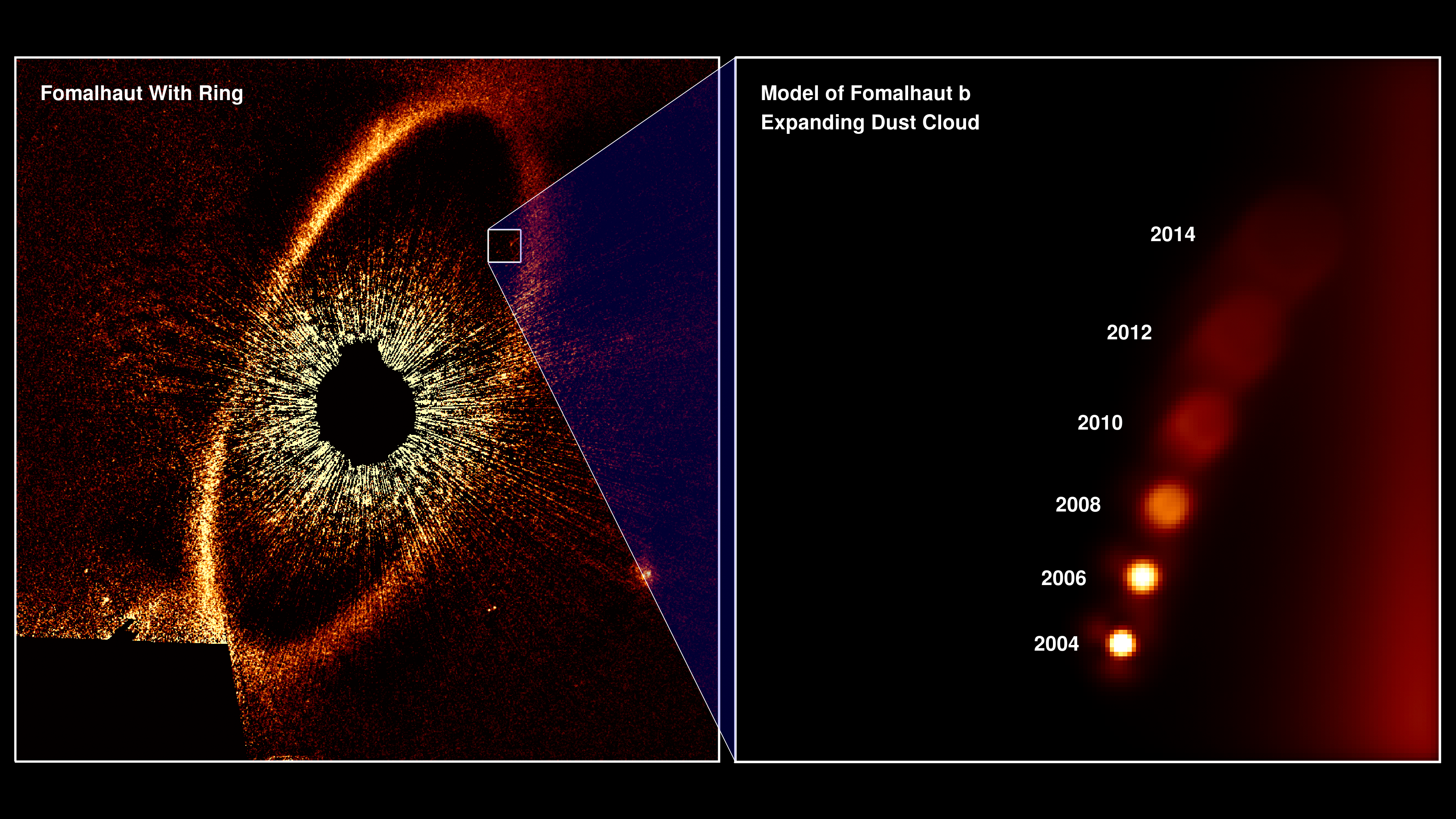
Astronomers using the Hubble Space Telescope have come to the jaw-dropping conclusion that a planet orbiting another star has seemingly disappeared after appearing in several years’ worth of Hubble images. A team of astronomers from the University of Arizona believe this is forensic evidence of a titanic collision between two asteroid-sized bodies orbiting a nearby star, Fomalhaut.
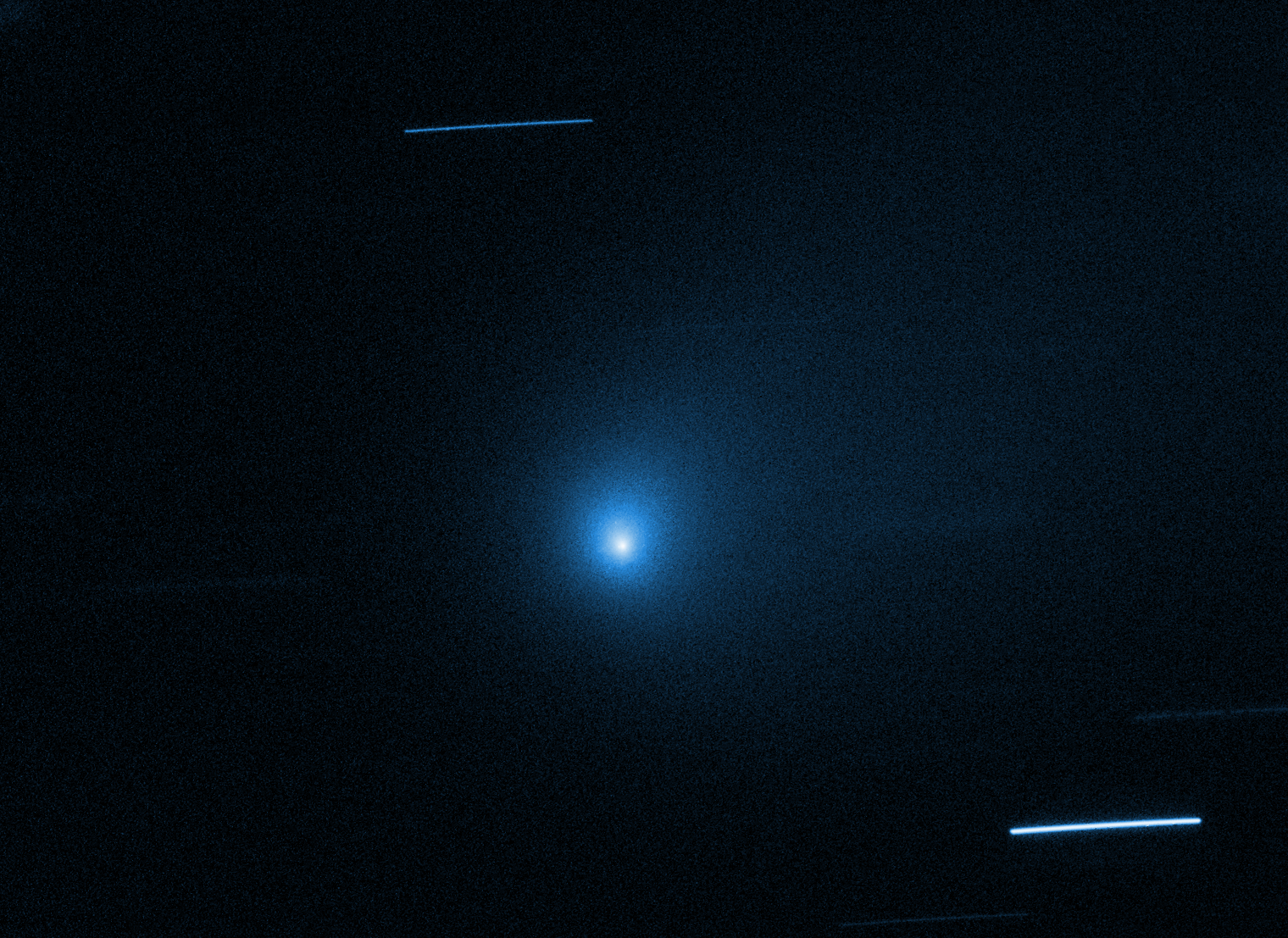
Zooming through space, the first bonafide interstellar comet discovered passing through our solar system is yielding chemical clues to its origin. An abundance of carbon monoxide contained in comet Borisov suggests it was born around a cool red dwarf star.
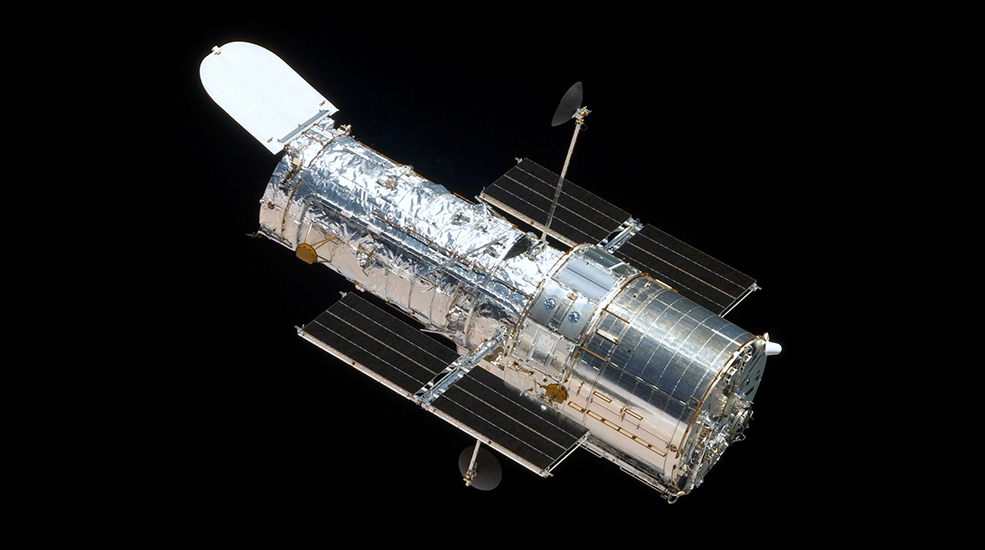
Peering into the darkness to see what we could not previously see, the Hubble Space Telescope has been delighting scientists and the general public with revealing details and images of galaxies and celestial phenomena. The American Institute of Physics recognizes and celebrates the momentous occasion of the 30th anniversary of its launch and Physics Today is highlighting the anniversary in its April issue with a look back at the history of the telescope and analysis of Hubble’s discoveries over the past 30 years.
A team of astronomers have found the best evidence yet that the culprit in a stellar homicide is a mid-sized black hole, the long-sought “missing link” in the black hole family. Multiple lines of evidence pointed to the elusive type of black hole, including investigations using Hubble and Chandra.
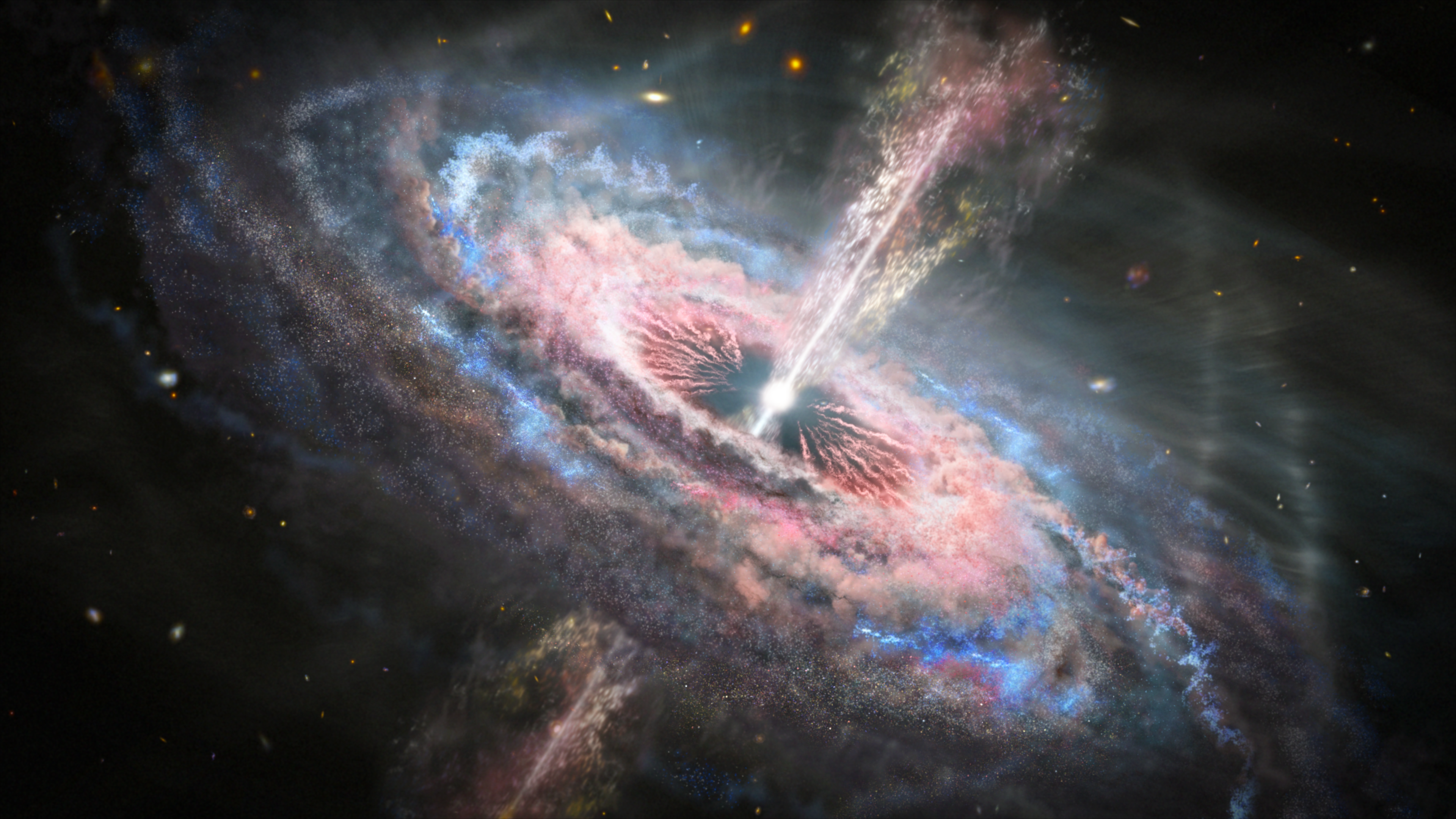
A team of astronomers using Hubble have found the most energetic outflows ever witnessed in the universe. These outflows emanate from quasars and tear across interstellar space like tsunamis, wreaking havoc on the galaxies in which the quasars live.
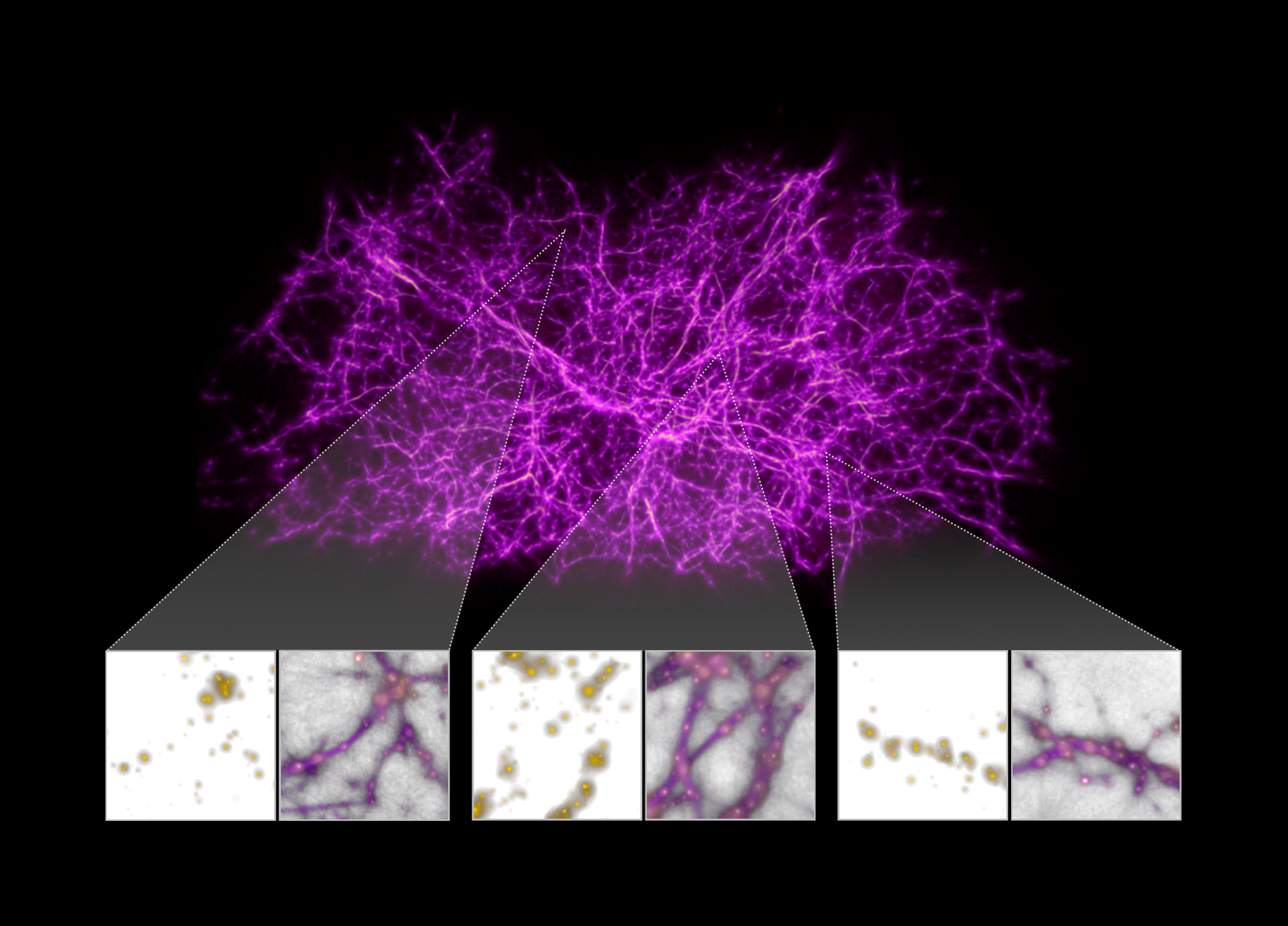
A team of researchers designed a computer algorithm based on slime mold behavior to generate a filamentary map of the universe, which they then confirmed with archival observations from the Hubble Space Telescope.
The operations people behind the Space Telescope’s 30 years of breakthrough science are honored by the National Air and Space Museum.
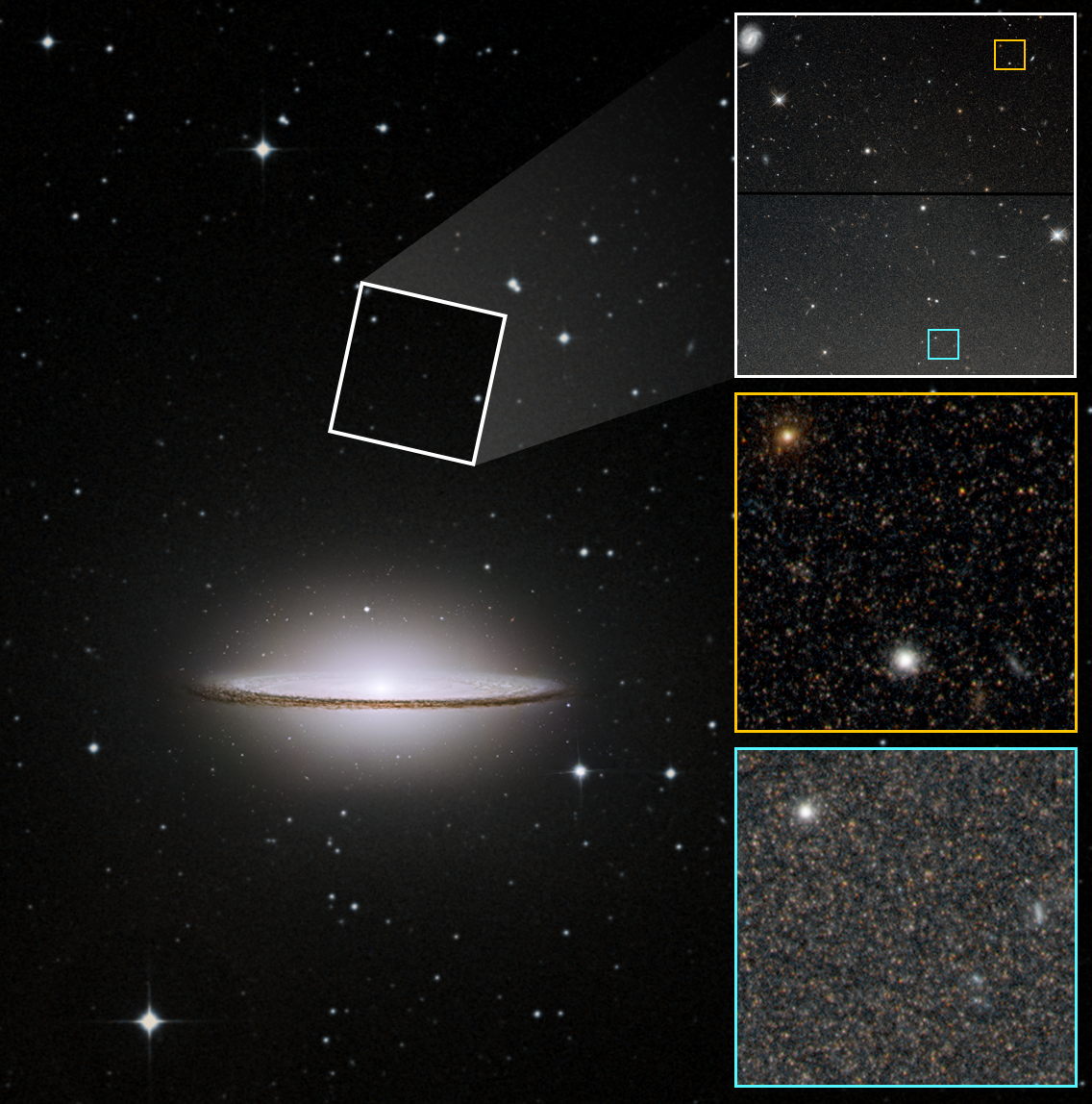
Hubble Space Telescope observations suggest that the broad “brim” of the Sombrero galaxy may conceal a turbulent past. Clues to a rough-and tumble history lie in the galaxy’s extended halo.
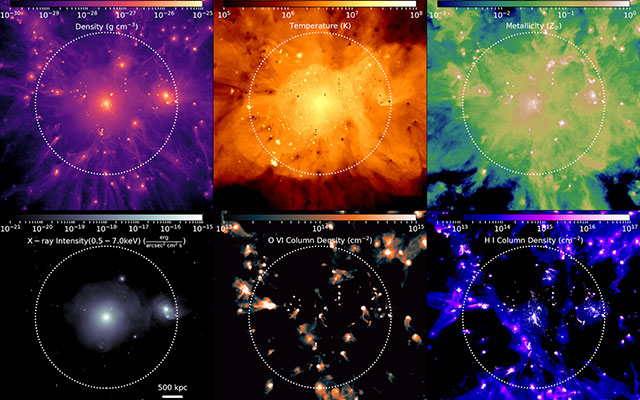
A new study published late last year in the Monthly Notices of the Royal Astronomical Society explored the molecular gas within and surrounding the intracluster medium, which fills the space between galaxies in a galaxy cluster.
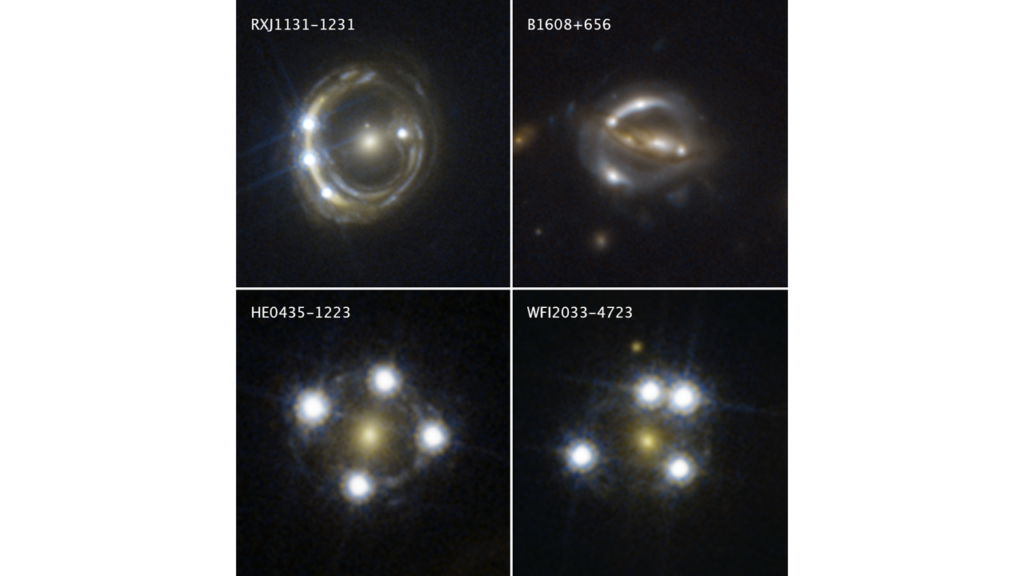
Astronomers using Hubble have made the most precise measurement yet of the universe’s expansion rate using the gravitational lensing method, which is independent
from the usual cosmic distance ladder.

Hubble observations suggest that orange stars, slightly cooler than our Sun, are better hangouts for life. There are more of them in our galaxy, they live much longer than our Sun, and unleash less deadly radiation than red dwarf stars.
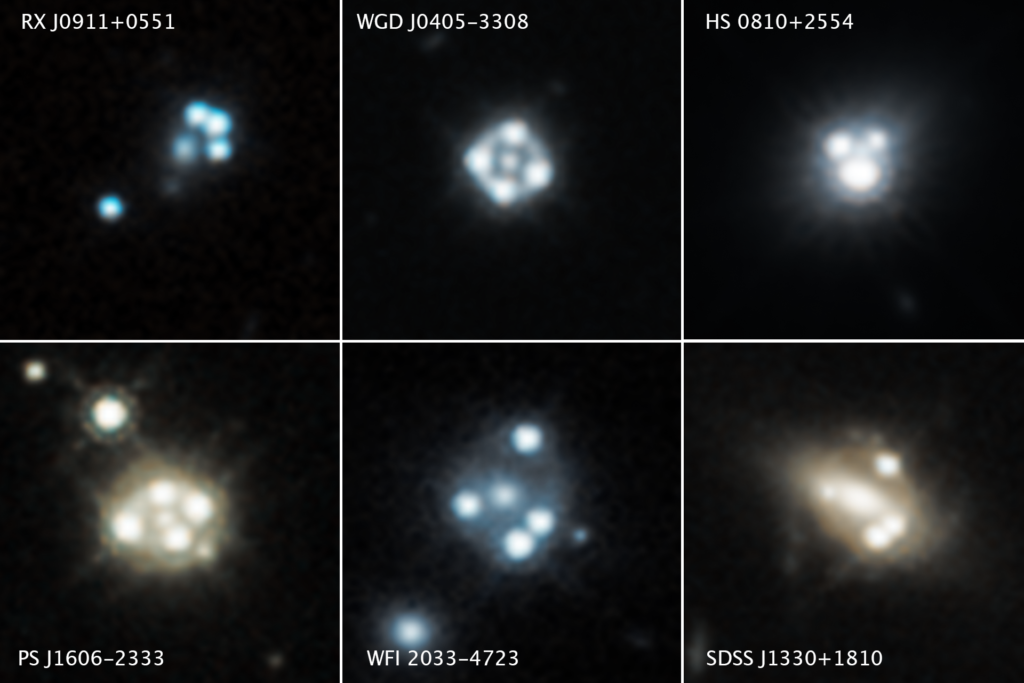
Using Hubble and a new observing technique, astronomers have uncovered the smallest clumps of dark matter ever detected. Dark matter is an invisible
substance that makes up most of the universe’s mass and forms the scaffolding upon which galaxies are built.
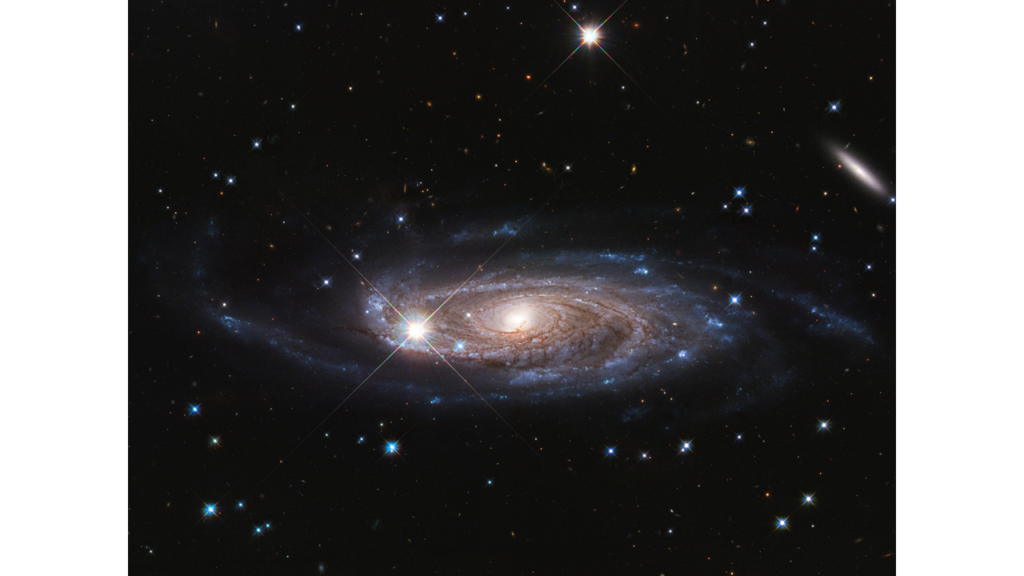
Hubble has photographed a majestic spiral galaxy, UGC 2885, located 232 million light-years away. The galaxy is 2.5 times wider than our Milky Way and contains 10 times as many stars. Astronomers want to know how it got so big.
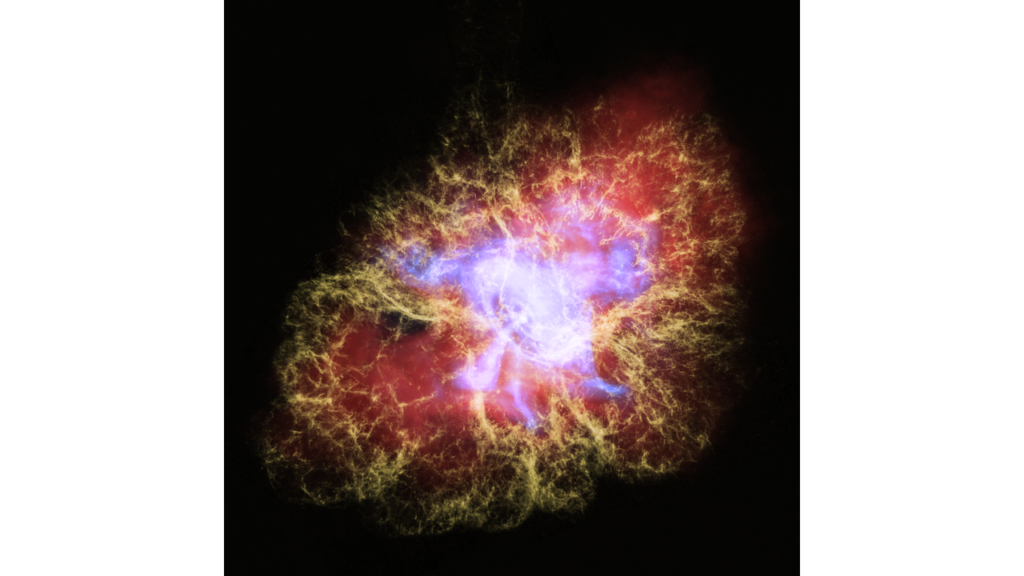
Astronomers and visualization specialists have combined the visible, infrared and X-ray vision of NASA’s Great Observatories to create a 3D representation of the dynamic Crab Nebula—the tattered remains of an exploded star.
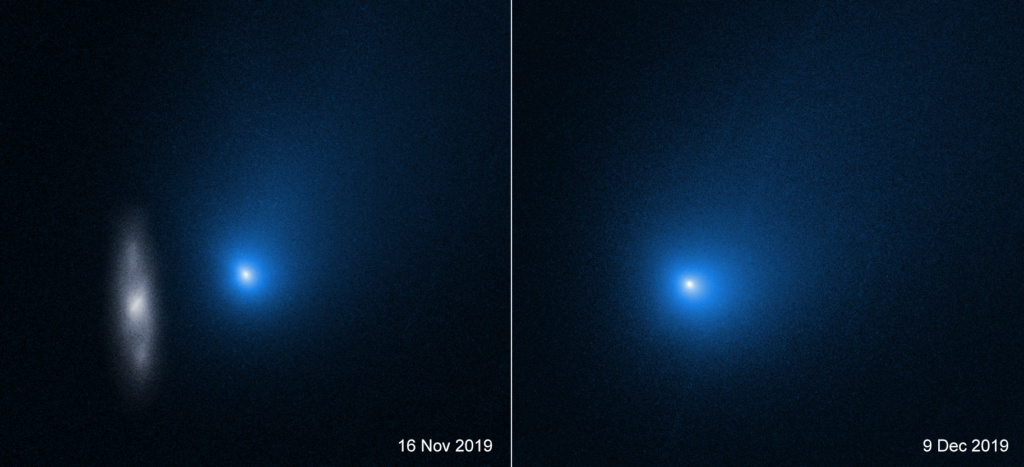
Hubble captured interstellar comet 2I/Borisov streaking past the Sun in a pair of images taken on November 16 and December 9. It is the first confirmed interstellar comet known to have passed through the solar system.
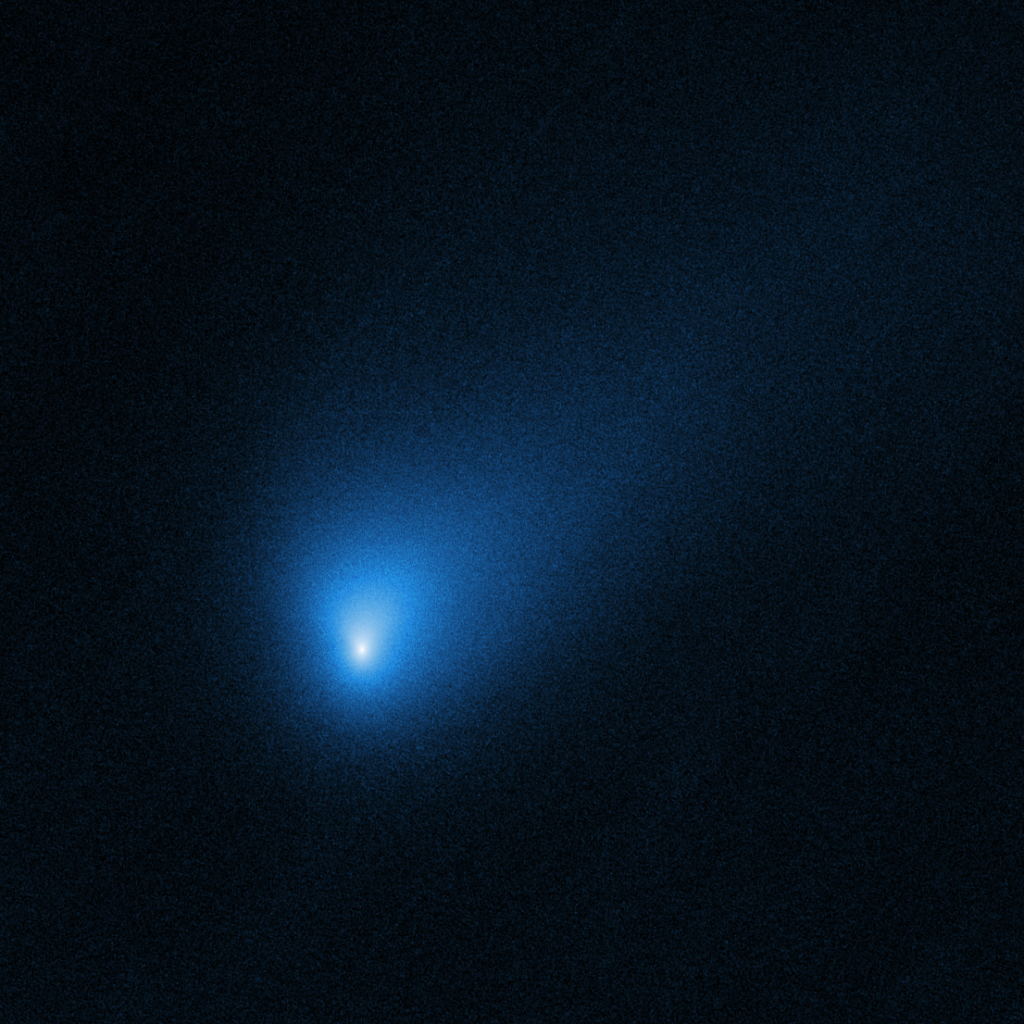
Hubble has taken the sharpest view to date of interstellar comet 2I/Borisov whose speed and trajectory indicate it has come from beyond our solar system. The image, taken October 12, 2019, reveals a central concentration of dust around the comet’s nucleus.